천식(기관지 천식)의 치료 Asthma(Bronchial asthma) treatments
천식 치료를 다음과 같이 분류할 수 있다.
- 대증요법
- 약물요법
- 면역 요법
- 심리요법
- 천식 발작을 유발시키는 항원이나 유발 인자를 피 하거나 제거하고
- 천식이 더 이상 발작되지 않게 하는 예방치료를 한다.
- 경미한 천식을 앓을 때도, 그 간헐 천식을 적절히 치료하지도 않고 예방치료도 하지 않으면 경증 간헐 천식으로 기관지에 만성 염증이 생길 수 있다.
천식 치료를 구체적으로 설명하면
Ⓐ 수분을 적절히 섭취한다.
Ⓑ 균형 잡힌 음식물을 충분히 섭취한다.
Ⓒ 실내 습도를 적절히 조절한다.
Ⓓ 숨이 가쁠 때 머리와 상체를 하체보다 15도 정도 높게 체위를 유지한다.
Ⓔ 정신과 마음을 안정시킨다.
Ⓕ 적절한 천식 치료약으로 치료한다.
Ⓖ 흔히 쓰는 천식 치료약의 종류와 형태
1. 수분을 적절히 섭취해 천식을 치료한다.
-
경미한 간헐 천식 발작이 유발될 때 대부분의 경우 평소 같이 음식물을 정상적으로 섭취할 수 있고 수분도 충분히 섭취할 수 있다.그래서 수분을 특별히 더 많이 섭취할 필요가 없다. 그러나 수분을 충분히 섭취하고 있는지 조심히 살펴 봐야한다.
-
중등도 지속 천식 발작이나 중증 지속 천식 발작이 유발될 때는 대부분의 경우, 식욕이 감퇴되고 음식물을 잘 먹지 못하고 탈수되기 쉽다. 탈수되면 기관지 속으로 분비된 점액, 즉 가래가 더 끈적거리게 된다. 기침해도 기도 속 끈적거리는 가래가 잘 떨어져 나오지 않아 가래를 뱉어내기가 힘들게 된다.
-
음식물을 잘 먹지도 못하고 심하게 탈수되면 기운이 더 탈진될 수 있고 천식 발작이 유발되어 천식을 앓는 동안 수분을 충분히 섭취해야 한다.
-
경미하게 탈수될 때는 취향에 따라 여러 종류의 음료수를 조금씩 자주 섭취해 탈수를 예방한다.
-
중증 지속 천식 발작이 유발됐을 때는 병원 중환자 치료실 치료를 받고 포도당 전해질용액 정맥주사로 탈수를 치료하고 탈수를 예방하는 것이 보통이다 [부모도 반의사가 되어야한다–소아가정간호백과]-제1권 소아청소년 응급의료–급성 탈수증 참조
2. 균형잡힌 음식물을 충분히 섭취 한다
-
경미한 간헐 천식 발작이 유발 되어 천식을 않는 아이들의 대부분은 건강한 다른 아이들과 같이 평소에도 음식물을 보통으로 먹을 수 있다. 중등도 지속 천식이나 중증 지속 천식 발작이 유발되어 천식을 앓는 대부분의 아이들은 식욕이 감퇴되어 음식물을 잘 먹지 못하고 신경질 적이다. 때로는 음식물을 먹은 후 바로 토하기도 한다. 특히, 기침하다가 잘 토할 수 있다. 이때 억지로 음식물을 먹으면 더 토할 수 있다.
-
중등도 지속 천식이나 중증 지속 천식 발작이 유발되어 천식을 앓고 있는 아이가 음식물을 평소와 같이 먹고 싶어 해도 처음 몇 시간 동안은 너무 많이 먹게 하는 것은 좋지 않다. 처음 몇 시간 동안 유동 음식물이나 반 유동 음식물을 조금씩 자주 먹도록 한다.
-
천식의 중증도가 점차로 좋아지면 식욕도 자연히 좋아지게 된다. 이때부터 먹고 싶은 대로 음식물을 서서히 충분히 주면 된다.
-
평소에 우유, 달걀, 밀가루 음식, 또는 초콜릿 등 알레르기 질환을 잘 유발시킬 수 있는 음식물은 될 수 있는 한 피하는 것이 좋다. 그런 종류의 음식물을 섭취하면 천식 발작이나 다른 종류의 알레르기 질환이 유발 될 수 있다. 그런 음식물을 될 수 있는 한 먹지 않는 것이 좋다.
3. 실내 습도를 적절히 조절해 천식을 조절 한다.
-
습도가 낮아 실내가 건조하면 기관지 속으로 분비된 가래가 더 끈적거리고 뱉어 내기가 더 힘들게 되므로 실내 습도를 60% 정도 유지 해 가래를 쉽게 뱉도록 하며 가끔 창문을 열어 실내 공기를 환기시킨다.
-
실내 습도를 적절히 조절할 수 없을 때는 가습기로 실내 습도를 조절할 수 있지만 여러 가지 이유로 천식 치료에 가능한 한 가습기를 쓰지 않는 것이 좋다. [부모도 반의사가 되어야한다–소아가정간호백과]-제21권 소아청소년 가정간호–가습기 참조
4. 숨이 가쁠 때 가능하면 머리와 상체를 하체보다 15도 정도 더 높게 한다
-
천식 발작으로 숨이 가쁠 때, 중증 지속 천식 발작이 유발되었을 때에 반듯이 누우면 복강 내 장기와 횡격막이 흉강 속으로 밀려들어가 폐가 차지해야 할 흉강 공간이 감소되어서 폐활량이 줄어들 수 있고 호흡곤란이 더 심 할 수 있다. 때문에 머리와 상체를 하체보다 15도 정도 더 높게 비스듬한 자세로 적절히 누우면 숨 쉬기가 더 편안 할 수 있다.
-
베개나 담요 등으로 등을 받쳐 체위를 적절히 조절하고 천식 발작의 증세가 호전되어 숨이 덜 가쁘면 평소와 같이 반듯이 누워도 된다.
5. 정신과 마음을 안정시킨다.
-
경미한 간헐 천식, 중등도 지속 천식, 또는 중증 지속 천식을 앓는 아이들의 대부분은 신경이 예민한 편이다. 천식 발작이 유발되었을 때는 보통 호흡으로 산소를 충분히 섭취 못하고, 잠을 제대로 자지 못하면 마음이 불안하고, 신경질적인 경우가 많다. 최선을 다 해 마음을 편안하게 해 주어야한다. 그렇지만 신경 안정제로 정신 안정을 시켜서는 안 된다.
-
몇 개월 내지 몇 년 동안 심하게 자주 재발되는 중증 지속 천식 발작을 여러 가지 치료 방법으로 적절히 적극적으로 치료해도 잘 치료되지 않을 수 있다. 그리고 천식치료에 쓰는 약물 부작용이 생겨 그로 인해 신경이 더 예민해 질 수 있다.
-
천식이 있는 환아나 환아의 부모에게 패그스 증후군(FAGS syndrome)이 생길 수 있다([부모도 반의사가 되어야한다–소아가정간호백과]-제12권 소아 신경계 정신, 정서, 행동, 심리, 수면 참조).
-
불안, 스트레스 등 정신적 문제로 천식 발작이 자주 유발될 수 있고, 반대로 자주 재발되는 중증 지속 천식으로 인해 불안하고 스트레스가 생길 수 있다.
-
이럴 때는 정신과 전문의나 임상 심리사의 심리 요법 치료를 받기도 한다.
-
부모와 자녀와의 관계에서 생긴 정신적 심리적 문제로 중증 지속 천식이 자주 발작되고 치료가 잘되지 않을 수 있다.
-
이럴 때 부모와 그 자녀를 얼마동안 서로 따로 떨어져 살도록 격리해서 천식 치료를 하기도 한다. 이런 치료 방법을 페어렌텍토미(Parentectomy/부모 자식 분리 치료법)라고 한다.
6. 천식을 적절한 천식 치료약을 치료한다.
(표 6-9, 6-11,6-12, 6-13, 6-14, 6-15, 6-16, 6-17, 6-18, 6-20~26 참조).
-
천식 치료에 쓰는 약을 통틀어 천식 치료약(물),또는 천식 치료제라 한다.
-
천식치료에 쓰는 약의 형태에는 주사액, 알약, 가루약, 시럽, 엘 릭서, 흡입 분무용액, 흡입 에로졸 HFA, 좌약 등이 있다.
-
수축된 기관지를 확장시킬 수 있는 천식치료 약물을 기관지 확장제라고 한다.
- 알부테롤(Albuterol),
- 에피네프린(Epinephrine),
- 알루펜트(Alupent),
- 지오필린(p.000),
- 이프라트로피움(p343),
- 자페루카스트(p342),
- 몬테루카스트(p340),
- 지류톤(p342),
- 살메톨(p345)등 여러 종류의 기관지 확장제가 있다.
- 천식으로 생긴 기관지 염증을 치료할 수 있는 기관지염제 즉
- 코르티코스테로이드제 (Corticosteroid)(p330)나
- 소디움 크로몰인(Sodium cromolyn)(p337),
- 지오필린(p339),
- 몬테루카스트제 등 약물은 기관지염을 소염시키는 약물이다.
-
기관지 벽 점막층에 있는 비만 세포 에서 히스타민이 분비되지 못하게 해서 천식 발작이 유발되지 못하게 예방할 수 있는 크로몰린(인탈) 등은 천식 예방치료 약에 속한다.
-
환아의 나이, 천식의 종류, 증상의 정도 등에 따라 천식 치료 약물의 형태를 선정해서 치료한다.
-
천식을 치료할 때 천식의 증상 징후에 따라 적절한 천식 치료약을 선택해야 한다. 모든 천식 치료약은 의사의 처방에 따라 써야 한다.
-
천식 발작은 한 번만 유발되어 앓고 지나가는 병이 아니라 일생동안 다시 유발될 수 있는 병이다.
-
부모와 천식을 앓는 자녀, 때로는 온 집안 식구들은 가능한 한 천식 치료에 쓰는 약물의 이름, 그 약물의 약리작용과 쓰는 법, 천식 치료약을 쓸 때 생길 수 있는 부작용 등에 관해서도 잘 알아야 한다.
-
자녀들의 천식은 대개의 경우, 단골 소아청소년과 의사보다도 부모가 1차적으로 우선 치료해야 하는 입장에 있는 때 가 더 많다.
-
한밤중에 집에서 자다가 천식발작이 갑자기 유발될 때 부모와 자녀 자신이 즉시 집에서 천식 발작을 우선 1차적으로 적절히 치료하는 법도 잘 배워야 하고 예방하는 법도 배워야한다.
-
부모나 환아 자신이 집에서 적절한 천식치료를 시작하며 상황에 따라 의사의 도움을 전화로 받아야 할 때도 있다.
-
전화로 단골 소아청소년과 의사의 전문적인 도움을 받으면서 부모와 환아가 서로 협조하여 치료해 나가야 하는 병이다.
-
이렇게 부모, 환아, 의사가 소아 천식 치료의 팀의 멤버가 되어야 천식이 효과적으로 치료될 수 있다.
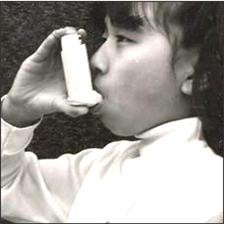
사진 191. 알부테롤 성분이 들어있는 흡입용 에어로졸 HFA나 흡입용 코르티코스테로이드제 에어로졸 HFA 등으로 천식을 치료 할 때 사진에서 보는 것 같이 앞쪽 입 안에 조금 넣고 흡입하는 방법도 있고 입술에서 1~2cm 떨어진 거리에서 흡입하는 방법도 있다.
Copyright ⓒ 2011 John Sangwon Lee, MD., FAAP
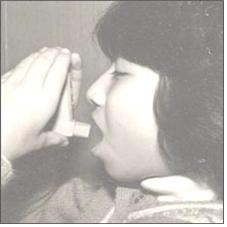
사진 192. 알부테롤 성분이 들어있는 흡입용 코르티코스테로이드제 에어로졸 HFA 등으로 천식을 치료할 때 사진에서 보는 것과 같이 앞쪽 입 안 속에 조금 넣고 흡입하는 방법도 있고 입술에서 1~2cm 가량 떨어진 거리에서 흡입하는 방법도 있다(HFA는 정량 흡입기)
Copyright ⓒ 2011 John Sangwon Lee, MD., FAAP
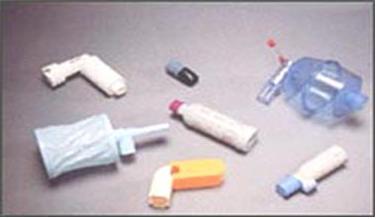
사진 193. 정량 흡입기로 치료할 때 이용할 수 있는 여러 종류의 에어로챔버
Copyright ⓒ 2011 John Sangwon Lee, MD., FAAP
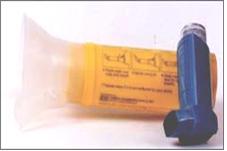
사진 194. 기관지 확장제의 일종인 베타2 아고니스트 에어로졸 HFA로 치료할 때나 기관지 확장제나 기관지 염증을 소염시키기 위해서 쓰는 흡입용 코르티코스테로이드제 에어로졸 HFA로 흡입치료할 때 사용하는 에어로챔버 사진(뒤사진)
에어로챔버는 최소 크기, 중간 크기, 또는 최대 크기로 만들어 판다. 더 자세한 정보는
www.aerochamberVHC.com 참조. Copyright ⓒ 2011 John Sangwon Lee, MD.FAAP
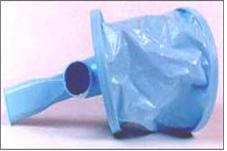
사진 195. 흡입용 알부테롤 기관지 확장제나 흡입용 코르티코스테로이드 기관지 소염제 에어로졸HFA로 흡입치료할 때 쓸 수 있는 에어로챔버의 일종
Copyright ⓒ 2011 John Sangwon Lee, MD., FAAP

사진 196. 알부테롤 에어로졸 HFA.
천식으로 수축된 기관지를 확장시킬 수 있는 기관지 확장제 알부테롤 분말 HFA 알부테롤은 베타 2 아고니스트 제이다.
Copyright ⓒ 2011 John Sangwon Lee, MD., FAAP
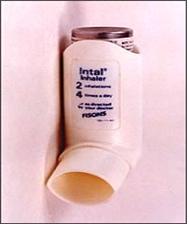
사진 197. 흡입용 인톨(Intal)에어로졸 HFA.
알레르기성 천식과 운동유발천식을 예방치료 하는데 주로 쓰는 크로몰린 에로로졸 HFA
Copyright ⓒ 2011 John Sangwon Lee, MD., FAAP
7. 흔히 쓰는 천식 치료약과 약의 형태.
-
천식 치료약은 다음 1~6의 형태가 있다.
-
천식의 중증도, 환자의 나이와 증상 등에 따라 천식 치료약의 종류와 그 약의 형태를 의사가 선택해서 치료한다.
-
천식 발작이 갑자기 유발된 급성 천식 치료에 바로 쓸 수 있는 천식 치료약도 있다.
-
천식 발작이 유발된 후 시간이 얼마동안 지난 후 그 천식 발작을 치료할 때 쓸 수 있는 천식 치료약도 있다.
-
천식 발작이 유발되지 않도록 예방하는 데 주로 쓰는 천식 예방치료 약 등이 있다
-
더 자세한 천식 치료약에 대하여 각 항을 참조.
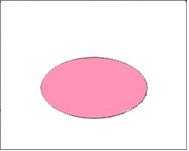
그림 198. 1. 알약(정, 정제)
Copyright ⓒ 2011 John Sangwon Lee, MD., FAAP

사진 199. 2. 캡슐약
Copyright ⓒ 2011 John Sangwon Lee, MD., FAAP
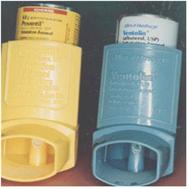
사진 200. 3. 기도 속으로 흡입할 수 있는 흡입용 에어로졸 HFA.
Copyright ⓒ 2011 John Sangwon Lee, MD, FAAP
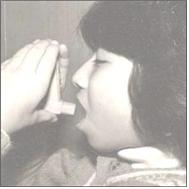
사진 201. 4. 기도 속으로 흡입할 수 있는 흡입용 에어로졸 HFA.
Copyright ⓒ 2011 John Sangwon Lee, MD, FAAP
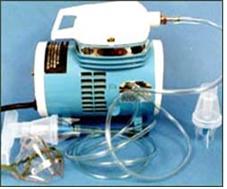
사진 202. 5. 분무기와 분무를 만들어 흡입 치료를 할 수 있는 천식 치료용 분무액
Copyright ⓒ 2011 John Sangwon Lee, MD., FAAP
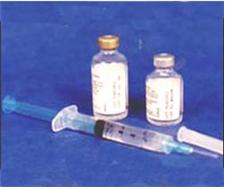
사진 203. 6. 천식치료에 쓰는 주사용 천식 치료용 앰풀과 병약
Copyright ⓒ 2011 John Sangwon Lee, MD, FAAP
8. 약리작용에 따라 천식 치료약을 선택한다.
-
알부테롤, 메타프릴, 또는 에피네프린 등의 천식 치료약은 수축된 기관지를 확장시킬 수 있는 기관지 확장제이다.
-
크로몰린이나 네도크로밀 등의 천식 치료약은 특히 운동 유발(성) 천식, 알레르기성 천식 발작이 더 이상 유발되지 않도록 예방치료에 주로 쓰는 천식 예방치료제이다.
-
프레드니솔론이나 프레드니손 등의 코르티코스테로이드제는 천식발작으로 인해서 생긴 기관지 벽 염증과 부종을 가라앉히는 소염제(항 염증제)이다.
-
천식 발작이 유발되어 앓고 있는 동안 기관지 기도 부분 염증이 급성으로 또는 만성으로 생기는 것이 보통이다. 기관지 염증의 중증도를 경감시키든지 완전히 없어지게 치료하는 데도 코르티코스테로이드제 치료가 상당히 효과적이고, 또 천식으로 생긴 증상 징후를 경감 치료하는데도 코르티코스테로이드제 치료가 상당히 효과적이다.
-
천식이 더 이상 심하게 발작되지 앓게 예방하는데도 코르티코스테로이드제가 상당히 효과적이다.
-
천식으로 인한 사망을 예방하고 치료하는 데도 코르티코스테로이드제는 가장 효과적이다.
-
그러나 코르티코스테로이드제를 잘못 사용할 때, 과량을 써서 치료할 때, 장기간 사용할 때 부작용도 많이 생길 수 있다.
-
흡입용 코르티코스테로이드 제 에어로졸 HFA로 지속 천식을 치료하는 것을 피하는 경향이 많이 있다는 연구 결과(출처-Pediatrics 12, 2006)도 있고, 또 다른 연구에 의하면, 처방에 따라 흡입용 코르티코스테로이드제 에어로졸 HFA로 천식을 적절히 치료하면 천식 치료의 효과가 아주 좋고 부작용도 그렇게 많지 않다고도 한다.
-
흡입용 코르티코스테로이드제 에어로졸 HFA로 천식을 치료할 때 생길 수 있는 부작용과 그 위험성도 무시 할 수 없지만 흡입용 코르티코스테로이드제 에어로졸 HFA로 천식을 치료 하지 않았을 때 생길 수 있는 위험성이 더 많이 발생할 수 있다.
-
때문에 상황에 따라 필요에 따라 흡입용 코르티코스테로이드제 에어로졸 HFA로 천식을 적절히 우선 1차적으로 치료해도 된다고 권장한다(출처-Dr. Frank Leondms, Thomsa Jefferson University, Philadelphia).
-
베클로메타손(Beclomethasone), 반세릴(Vanceril)이나 플루티카손(Fluticasone/Flovent), 또는 그 외 다른 흡입용 코르티코스테로이드제 에어로졸 HFA로 기도 속으로 흡입해서 천식을 치료할 수 있다.
-
지오필린(Theophylline)등은 수축된 기관지를 확장시킬 수 있는 기관지 확장제의 일종이다. 과거에는 경증 지속 천식이나 중등도 지속 천식, 또는 중증 지속 천식을 치료하는데 많이 썼으나 요즘 소아천식 치료에 보편적으로 잘 쓰지 않는다.
-
심한 천식 발작은 산소호흡 치료, 코르티코스테로이드제 혈관주사 치료, 알부테롤 분무치료 등 기관지 확장제, 포도당 전해 질용액 정맥주사 재수화 치료 등으로 치료한다(표 25 참조).
-
경증 지속 천식 발작은 알부테롤(Albuterol) 시럽이나 정, 또는 흡입용 에어로졸 HFA, 프레드니손 시럽이나 정, 또는 분무 등의 코르티코스테로이드제 (표 25 참조) 등으로 치료한다.
-
흡입용 알부테롤 에어로졸 HFA나 흡입용 코르티코스테로이드제 에어로졸 HFA로 중등도 지속 천식이나 중증 지속 천식을 치료하기도 한다.
-
흡입용 반세릴 코르티코스테로이드제 에어로졸 HFA로 2주 내지 몇 개월 동안 천식을 계속 치료할 수 있지만 이 약으로 생길 수 있는 부작용을 고려한 다음 이런 천식 치료약으로 치료해야 한다. 이런 천식 치료약들은 의사의 처방 없이 써서는 절대로 안 된다.
9. 천식으로 생기는 기침을 치료하는 기침약.
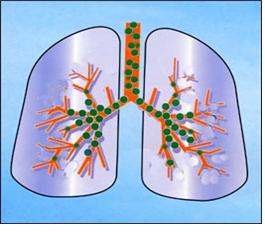
그림 204. 흡입용 코르티코스테로이드 에어로졸 HFA나 베타2 아고니스트 에어로졸 HFA로 천식을 치료할 때 분말 형태의 천식약이 기관 속과 기관지 속에 까지 들어가도록 효과적으로 흡입해야 한다. 출처-Boehringger ingelheim, pharmaceuticals, inc Ridgefield, Ct
-
천식 발작이 유발될 때 기관지 속에 끈적거리는 점액, 즉 가래가 분비되고 기관지 벽 점막층이 붓고 점막층에 염증이 생긴다.
-
심하지 않은 천식 발작이 유발되었을 때도 기침을 하는 것이 보통이다. 또 기도에 염증이 생기고 기도가 자극받을 때 기침이 나오게 된다. 이 때 기관지 속에 괸 가래를 쉽게 뱉어낼 수 있게 기침약으로 치료하는 것이 이상적이다.
-
그러나 그런 목적으로 쓸 수 있는 이상적 천식 기침치료약은 아직 없다.
-
수축된 기관지를 확장시킬 수 있는 기관지 확장제와 기관지 벽 점막층에서 가래가 분비되지 않게 천식성 기관지 염증을 치료할 수 있는 소염제는 천식성 기침을 치료하는 기침약이 된다. 기관지 확장제와 기관지 염증을 소염시킬 수 있는 약물이 바로 천식으로 생기는 기침을 치료하는 기침약이라고 할 수 있다.
-
천식 치료에 쓰는 알부테롤 등 베타 2 작용제(아고니스트)는 수축된 기관지를 확장시킬 수 있는 천식 치료약도 되고 천식 기침약도 될 수 있다.
-
코르티코스테로이드제는 기관지의 염증과 부종을 가라앉혀서 천식이 치료되고 또 기침을 덜하게 할 수 있고, 간접적으로 가래가 덜 생기게 하는 천식성 기침 치료약도 된다.
-
따라서 알부테롤이나 코르티코스테로이드제 등은 천식 치료약도 되고 그와 동시에 천식 기침 치료약도 될 수 있어 이상적인 천식 기침치료약이라고 할 수 있다.
-
코데인제나 하이드로코돈제 등 마약성분이 든 강력한 기침 치료약은 될 수 있는 한 천식 치료에 써서는 안 된다. 특히 소아 천식 기침에 써서는 안 된다. 이 두 가지의 기침 치료약은 뇌에 있는 기침중추 기능을 둔화시킨다. 그 약의 약리 작용이 계속 지속되는 동안만 기침을 일시적으로 덜하게 만든다.
-
이때 기침을 일시적으로 덜 하기 때문에 기관지 속에 괸 가래를 정상적으로 뱉어낼 수 없다.
-
천식 발작이 유발될 때 천식을 치료하기 위해 쓰는 알부테롤 등 기관지 확장제와 기관지 염증을 소염시킬 수 있는 코르티코스테로이드제 등으로 천식을 치료하면 천식으로 생기는 기침도 치료될 수 있고 천식도 치료될 수 있다고 이미 언급했다.
-
이런 천식 치료약을 적절하게 써서 천식 발작이 다 나으면 기침도 자연히 멈추게 된다.
-
특히, 중증 천식이 발작될 때 수분을 충분히 섭취해서 기관지 속에 괸 가래를 묽게 하고 그 가래를 쉽게 뱉어낼 수 있게 치료해야 한다.
-
수분을 충분히 섭취할 수 없을 때는 포도당 전해질용액 정맥주사 재수화 치료로 탈수를 치료하고 예방한다.
-
또 수분을 적절히 섭취하면 기침을 쉽게 하게 된다.
-
가래를 쉽게 뱉어내도록 한다.
-
항히스타민 성분이 들어있는 종합 감기약과 항히스타민 성분과 비강 점막 충혈 완화제의 성분이 들어있는 종합 감기약은 기관지 속에 괸 가래를 더 끈적거리게 만들 수 있기 때문에 천식 증상이 있을 때는 될 수 있는 한 그런 종류의 종합 감기약은 의사의 처방에 따라야 한다.
-
이프라트로피움(Ipratropium)은 기관지 확장 작용도 있고 가래가 기관지 내로 분비되는 것을 억제하는 약리 작용이 있어 천식 기침 치료에 효과가 있다.
10. 천식을 산소 호흡으로 치료할 때가 있다
-
경증 지속 천식 발작이 유발될 때는 산소호흡 치료가 거의 필요치 않지만 중등도 지속 천식 발작이 심하게 유발될 때나 중증 지속 천식 발작이 유발될 때는 산소호흡 치료가 극히 필요할 때가 많다.
-
가정에서 산소치료가 필요할 정도로 천식 발작이 심하게 유발됐을 때 천식 환아는 병원 응급치료를 받아야한다.
-
급성으로 중증 지속 천식 발작이 유발되어 호흡곤란이 심할 때는 산소호흡치료가 꼭 필요하다.

사진 205. 필요에 따라 산소호흡으로 천식을 치료한다. 영유에게 산소를 공급하기 위해 영유아를 산소 텐트 속이 있게 한다.
Copyright ⓒ 2011 John Sangwon Lee, MD, FAAP
11. 천식을 면역 요법으로 치료할 때도 있다.
-
천식은 호흡기에 생긴 알레르기 질환의 일종이지만 천식 발작은 항원으로 유발될 뿐만 아니라 스트레스 등 내적 천식 유발인자, 흡연 등 외적 천식 유발 인자 등 비 항원으로 천식 발작이 유발될 수 있다. 즉 소아천식은 알레르기 항원으로 유발되지 않을 수 있다.
-
일반적으로 소아 천식은 면역 요법으로 잘 치료되지 않는 것이 보통이다. 일단 소아청소년과 의사의 소개를 받아 알레르기의 전문의 자문을 받고 상담하고 필요에 따라 면역 요법 치료를 받는 것은 좋다.
12. 천식 발작을 유발 시킬 수 있는 유발 인자 음식물을 피한다.
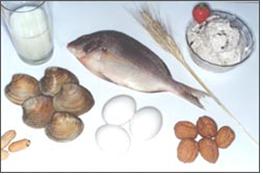
사진 206. 이런 종류의 음식물은 특히 조심해야한다. 이런 종류의 음식물은 기관지 천식뿐만 아니라 알레르기 비염, 아토피 피부염 등 알레르기성 질환이 유발시킬 수 있다. Copyright ⓒ 2011 John Sangwon Lee, MD, FAAP
-
천식을 앓는 아이들의 대부분은 천식과 그 외 다른 여러 종류의 알레르기 질환을 함께 앓을 수 있다.
-
우유, 달걀, 또는 나무 견과류 등 음식물은 식품 알레르기를 더 잘 유발 시킬 수 있다. 이 종류의 음식물 섭취를 가능한 피하도록 한다.
13. 개, 고양이 새 등 애완동물을 집안에서 기르지도 말고 접촉하지 만다.
-
짐승의 털이나 새 깃으로 만든 베개, 옷, 이불을 사용하지 않는다.
-
개나 고양이 등 애완동물을 부득이 키워야 할 때는 가능한 한 집 밖에서 키우고, 개 등 애완동물을 집안에서 키워야 할 때는 목욕을 자주 시켜야 한다.
14. 창문을 자주 열어 실내 공기를 자주 환기시키고 집안 냄새를 제거한다.
-
화분(꽃가루) 농도가 높은 봄 계절에는 창문을 꼭 닫아 두고,
-
집안 습기를 조절하여 곰팡이, 몰드가 집안에서 자라지 않게 한다.
-
꽃이나 관상목은 집안에서 기르지 않는 것이 좋다.
15. 중등도 지속 천식이나 중증 지속 천식 발작이 유발될 때 치료
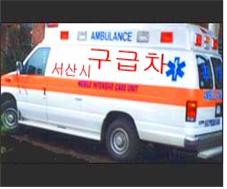
그림 207. 중등도 지속 천식 발작이나 중증 지속 천식 발작이 갑자기 유발될 때는 구급차나 다른 적절한 교통수단을 이용해 병원 응급실에서 응급 치료를 받아야 한다.Copyright ⓒ 2011 John Sangwon Lee, MD, FAAP
-
천식 발작이 갑자기 심하게 유발되면 응급으로 치료받아야 한다.
-
의료구급대, 병원 응급실, 또는 단골 소아청소년과 의사의 지시에 따라 가장 빠르고 적절한 치료 방법을 선택해야 한다.
-
사는 지방이나 나라에 따라 다르겠지만, 일반적으로 응급치료를 시작하기 전에 단골 소아청소년과 의사에 전화해서 어떻게 치료를 받아야 가장 좋은지 결정하거나, 병원 응급실로 급히 직접 가는 것이 가장 좋다.
-
심하게 발작된 천식은 일반적으로 산소호흡 치료, 알부테롤 기관지 확장제 분무 흡입 치료, 코르티코스테로이드제 정맥 주사, 포도당 전해질 용액 정맥주사 등으로 천식 응급 치료를 한다.
-
중증 지속 천식 발작이 심하게 유발될 때나 천식 지속 상태를 효과 있게 적절히 치료하지 않으면 호흡부전이 생길 수 있고 사망 할 수 있다.
-
기관내관(氣管內管) 삽입치료를 하고 기관내관을 통해 산소 호흡치료를 해야 할 때도 있다.
-
그러므로 이런 기관내관 치료를 할 수 있는 종합 병원으로 이송하는 것도 중요하다.
16. 환아 본인은 물론이고 주위 사람도 흡연해서는 안 된다.
-
천식이 있는 사람은 흡연을 해서는 절대로 안 되고, 간접흡연에 노출 되서도 안 된다.
-
흡연 이외 다른 여러 종류의 자극성 무기·유기화학 물질들로 천식 발작이 유발될 수 있으므로 자극성 화학 물질을 피해야 한다.
17. 야간 수면 유발성 천식 치료
-
천식 발작이 밤에 자는 동안 유발될 수 있다. 이런 천식을 야간 수면 유발성 천식이라 한다.
-
경도 지속 천식이 있는 아이가 밤에 자다가 기침을 자주 할 수 있고 간헐 천식이 있는 아이도 자다가 천식 발작이 유발되어 기침을 하기도 한다.
-
이런 야간 수면 유발성 천식 발작이 유발될 때 천명은 하나도 나타나지 않고 밤에 자는 동안 기침을 계속 해 잠을 제대로 자지 못할 수 있다.
-
야간 수면 유발성 천식은 밤에 잠자러 들어가기 30분 전 기관지 확장제로 예방치료를 한다.
-
여러 가지 기관지 확장제 중 알부테롤 시럽이나 정을 복용하든지,
-
흡입용 알부테롤 에어로졸 HFA를 기도 속으로 흡입하든지,
-
또는 분무용액 알부테롤제로 분무를 만들어서 그 분무를 흡입한 후 잠자러 들어가면 잠자는 동안에 야간 수면 유발성 천식 발작과 잠자다가 기침을 덜하게 할 수 있다.
-
경구용 프레드니손제로 3~5일간 치료하면 더 잘 나을 수 있으나 재발될 수 있다. [부모도 반의사가 되어야한다–소아가정간호백과]-제18권 소아청소년 이비인후 질환–급성 축농증 참조
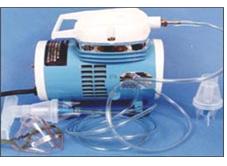
사진 208. 알부테롤액 분무나 코르티코스테로이드 액제 분무, 또는 크로몰린액제 분무로 천식 치료를 할 때 쓰는 분무기
Copyright ⓒ 2011 John Sangwon Lee, MD., FAAP
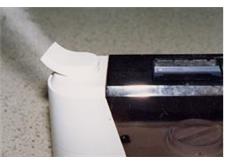
사진 209. 여러 가지 이유로 가습기는 천식 치료에 쓰지 않는 것이 보통이다.
Copyright ⓒ 2011 John Sangwon Lee, MD., FAAP
18. 이차 박테리아 감염병 등 세균 감염병 합병증이 없는 한 천식을 항생제로 치료하지 않는다.
-
박테리아 감염병이 없는 천식을 치료할 때 통상적으로 항생제로 치료하지 않는다.
-
최근 연구에 의하면, 천식 발작이 급성으로 유발되었을 때 적절한 천식 치료약과 Telithromycin(Ketek)항생제로 치료했을 때와 항생제로 치료받지 않고 적절한 천식 치료약물로만 치료받았을 때의 치료효과를 비교한 연구결과에 의하면 적절한 천식 치료약물과 Telithromycin 항생제로 천식을 동시 치료 받았을 때의 치료효과가 더 좋았다고 한다.
-
베타 2 작용제, 테오피린(지오필린/Theophylline), 크로몰린, 코르티코스테로이드제 등으로 적절히 치료한 천식이 잘 치료되지 않을 때는 Troleandomycin(TAO) 항생제로 치료한 결과 천식이 치료됐다는 연구 결과도 있다.
19. 감기나 상·하 기도 바이러스성 감염병을 않을 때의 천식 치료
-
감기나 그 밖의 바이러스성 상기도 감염병이나 하기도 감염병이나 다른 바이러스성 감염병을 앓을 때마다 바이러스성 감염병으로 천식 발작이 유발될 수 있다.
-
천식을 앓았던 과거 병력이 있는 아이가 감기나 다른 종류의 바이러스성 상·하기도 감염병에 걸렸다고 생각되면 천식 발작이 유발되기 바로 전에 경구용 알부테롤 정·시럽이나 흡입용 알부테 에어로졸 HFA 등 천식 치료약으로 예방치료를 미리부터 하면 천식 발작이 유발되지 않게 예방될 수 있고, 또 유발되어도 훨씬 가볍게 천식 증상이 나타날 수 있다.
-
천식을 앓았던 과거나 현재의 병력이 있는 아이들이 감기나 그 밖의 바이러스성 상·하기도 감염병을 앓으면 바이러스성 크루프와 천식 발작이 동시에 유발될 수 있다.
-
그와 반대로, 과거에 크루프를 한 번이라도 앓았던 과거 병력이 있는 아이들은 천식에 걸릴 가능성이 상당히 높고 바이러스성 크루프를 앓을 때 천식이 발작되는 경우도 많다.
-
따라서 천식 발작이 유발될 때 치료하는 것과 같이 바이러스성 크루프가 유발 되면 기관지를 확장시키는 알부테롤제와 기관지 염증을 소염시킬 수 있는 코르티코스테로이드제 등으로 치료할 수 있다.
-
[부모도 반의사가 되어야 한다–소아가정간호백과]-제8권 소아청소년 호흡기 질환–바이러스성 급성 후두염 참조
20. 위식도 역류로 유발되는 천식 발작 치료
-
지속 천식이 있는 비 아토피성 소아들의 3분 2에서 위식도 역류 병(GERD)이 있고 위식도 역류 병을 양자 펌프 억제제(Proton pump inhibitors)와 위장 운동 촉진제(Prokinetic agents) 등으로 치료할 수 있다.
-
필요에 따라 수술로 치료할 수 있다.
-
천식약으로 치료 한 결과 지속 천식이 잘 치료되었다고 한다.(출처;Pediatrics News. December 2008. p.8).
-
양자 펌프 억제제(Proton pump inhibitors/ppi)로 치료한 결과 치료효과가 없다는 연구도 있다
21. 운동 유발(성) 천식 발작 치료와 예방
-
천식을 앓았던 과거 병력이 있는 아이들이 육체적 운동이나 노동을 할 때 천식 발작이 유발될 수 있다.
-
이런 천식을 운동 유발 천식이라 한다.
-
과거에 천식을 앓은 병력이 있는 아이들이 육체적 활동을 보통으로 할 때는 천식의 증상이 나타나지 않다가 육체적 운동이 과다하면 천식이 발작이 되면서 기침, 호흡곤란, 앞가슴 아픔, 피로, 숨 가쁨, 호기성 천명 등의 천식 증상 징후가 생길 수 있다.
-
육체적 운동으로 천식 발작이 유발될 때 대부분의 아이들은 하던 운동을 더 이상 계속 할 수 없는 때가 많다.
-
어떤 아이들은 육체적 운동을 할 때마다 육체적 운동 유발 천식이 발작될 수 있으므로 육체적 운동을 꼭 해야 할 때는 운동을 시작하기 30∼60분 전에 기관지 확장제인 알부테롤 정이나 시럽을 복용 또는 흡입용 기관지 확장제 에어로졸 HFA를 흡입, 또는 흡입용 크로몰린 분무나 흡입용 크로몰린 에어로졸 HFA를 사용하여 육체적 운동 유발 천식을 예방할 수 있다.
-
육체적 운동 유발 천식을 예방하면 육체적 운동 중 운동 유발 천식 발작이 유발되지 않거나 경미하게 자나갈 수 있으므로 운동 유발 천식이 있다고 육체적 운동을 전부 중지해서는 절대로 안 된다.
-
중증 지속 천식 발작이 자주 심하게 유발될 때, 경증 지속 천식 발작이 자주 유발되어 기침을 자주 할 경우, 몇 개월 내지 몇 년 동안 흡인용 크로몰린 분무나 흡입용 크로몰린(Cromolyn)제 에어로졸 HFA나 흡입용 네도크로밀(Nedocromil) 에어로졸 HFA를 흡입하면 천식이 발작되지 않도록 예방될 수 있고 또 치료도 된다.
- 베클로메타손(Beclomethasone)
- 트리암시노론(Triamcinolone)
- 플우투카손(Flutucasone)
- 플우니소라이드(Flunisolide) 등의 흡입용 코르티코스테로이드제 에어로졸 HFA를 처방에 따라 몇 주 내지 몇 개월 동안 기도 속으로 흡입해서 천식 발작이 유발되는 것을 예방하고 치료하기도 한다.
-
이런 코르티코스테로이드제로 천식을 치료할 때 여러 가지 부작용이 생길 수 있으니 꼭 의사의 처방에 따라 써야 한다.
-
마스크나 스카프 등으로 입과 코를 카버해서 찬 공기를 흡입하지 않게 하고, 운동시작 30분전 적절한 천식 치료약을 쓰고 운동 시작 30~60전 준비 운동을 하여 육체적 운동 유발 천식을 예방한다.
-
천식 병력이 있는 아이들의 대부분은 알레르기 비염, 부비동염, 음식물(식품) 알레르기, 약물(약품) 알레르기, 곤충 알레르기, 아토피 피부염 등 여러 종류의 알레르기 질환을 함께 가지고 있을 수 있다.
-
음식물, 약물, 곤충에 물림 등으로 알레르기 질환이 생기지 않게 극히 조심해야 한다.
-
독감, 바이러스성 호흡기 감염병이나 위장염 등으로 천식 발작이 유발될 수 있다.
-
이런 감염병이 있을 때는 천식 발작이 훨씬 더 심하게 유발될 수 있고 천식이 더 오랫동안 지속될 수 있다.
-
천식 발작이 유발될 때 어떤 종류의 바이러스성 감염병을 동시에 앓으면 천식을 효과적으로 치료하기가 더 어려워지므로 집에서 보통 때와 같이 치료하는 것보다 병원 입원 치료를 해야 한다.
22. 운동 유발(성) 천식의 감별진단
-
성대 기능 부전증, 심장병, 빈혈, 폐병, 또는 아나필락시스 등의 증상은 육체적 운동유발 천식의 증상과 비슷할 수 있으므로 감별 진단을 해야 한다.
|
다음은“우리 아이 기침이 나을 날이 없어요, 천식에”에 관한 인터넷 소아청소년 건강상담 질의응답의 예 입니다. |
Q&A. 우리 아이 기침이 나을 날이 없어요, 천식에.
Q.
97년11월 5일생이며 기침이 나을 날이 없습니다.
심할 때는 밤12시에서 2시 사이에 다리를 들썩이고 해서 한약, 양약을 먹이면 조금 나아지다가도 요즘처럼 기온차가 많이 나면 이시간대 자면서 기침을 하고, 아침에 일어나자마자 또 기침을 합니다.
될 수 있으면 찬 음료나 물은 먹이지 않으며, 다른 개월 수의 아기에 비해 몸무게, 키가 미달입니다. 이제 겨우 13.5kg입니다.
먹는 양도 많지는 않으나, 아무거나 가리지 않고 먹습니다. 배부르면 먹지 않고요.
A.
은주님
질문해 주셔서 감사합니다.
병을 진단하고 치료하는 데는 과거 병력, 가족 병력, 현재 병력, 자세한 증상 징후, 진찰소견, 필요에 따른 임상검사와 X선 사진 검사 결과 등을 총 종합해서 진단하는 경우가 많습니다.
제가 답변을 드리는데 더 많은 정보가 필요하지만 주신 정보를 토대로 해서 답변을 드리겠습니다.
기관지염, 축농증, 폐렴, 백일해, 기도 내 이물, 또는 천식 등이 있을 때 그로 인해 기침하는 것이 보통입니다. 자녀의 경우 무엇 때문에 기침을 하는지 확실한 답변을 드릴 수는 없지만 천식으로 기침을 그렇게 하는지 의심해 봅니다.
친 부모 형제자매들이나 그 자녀 자신의 과거나 현재의 병력에 천식, 알레르기 비염, 아토피 피부염, 우유 알레르기, 약물 알레르기가 있거나, 또 자녀가 아토피 체질이면 천식으로 기침을 할 가능성이 아주 많습니다. 또한 친 부모 형제들과 마찬가지로 거의 비슷한 과거나 현재 알레르기 질환으로 고생할 수 있습니다.
천식은 유전성 호흡기 질환입니다.
기도가 수축되고 기도 내 벽에 염증이 생기고 기도 감수성이 예민해지는 병입니다.
집 먼지, 집 먼지 진드기(집 먼지 좀 진드기), 개나 고양이의 털 침 비듬, 짐승의 털이나 새 깃털로 만든 이불 베개, 곰팡이, 몰드, 꽃가루, 우유나 달걀 등의 음식물 항원이 천식 발작을 유발시킵니다. 또 찬 공기, 스트레스, 육체적 운동, 수면 등 비 항원으로 천식발작이 유발될 수 있습니다.
치료는 위에 열거한 항원이나 유발 인자를 피하거나 제거해서 합니다.
알부테롤제 등 기관지 확장제를 경구로, 에어로졸 HFA 또는 분무로 흡입해 치료를 할 수 있고, 기관지 염증도 치료하는 코르티코스테로이드제 소염제로 치료합니다.
급성 천식 발작이 유발될 때는 경구 코르티코스테로이드제 또는 흡입용 코르티코스테로이드제로 3~4일간 기관지 확장제와 같이 치료하는 것이 보통입니다.
물론 급성 중증 지속 천식 발작이 유발됐을 때는 코르티코스테로이드제 정맥 혈관 주사로도 치료합니다. 의사의 처방 없이 코르티코스테로이드제로 치료해서는 절대로 안 됩니다. 가슴 X선 사진검사를 해서 폐나 심장, 또 흉강 내에 어떤 이상이 있는지 알아볼 수 있습니다.
사실은 위에서 설명한 치료보다 천식의 치료는 아주 더 복잡합니다.
소아청소년과 의사의 진단 치료를 꼭 받으시기 바랍니다.
자녀의 성별, 현재의 체중과 신장 그리고 출생 시 체중과 신장, 부모의 체중과 신장을 알면 성장 발육에 대해서 말씀을 더 드릴 수 있겠습니다.천식, 천식의 백문백답 등을 참조하시기 바랍니다. 질문이 더 있으면 또 방문하세요. 감사합니다. 이상원 드림
|
다음은“기관지천식, 알레르기 비염에 대한 질문입니다.”에 관한 인터넷 소아청소년 건강상담 질의응답의 예 입니다. |
Q&A. 기관지천식, 알레르기 비염에 대한 질문입니다.
Q.
안녕하세요? 우연히 선생님의 홈페이지에 들어와 유익한 정보를 많이 접했습니다.
제가 상담할 아이는 만6세 된 남자아이로 2년 전에 강가에서 좀 춥게 놀다가 밤에 갑자기 숨소리가 이상해서 다음날 병원에 갔더니 천식이라는 진단을 받고 자디텐이라는 알레르기 예방약을 처방받았습니다.
약 1년간 자디텐과 히스토불린이라는 주사를 맞다가 제가 임의로 그만 중도에 그만 두었습니다. 제 아이는 1년에 3~4번 정도 환절기에 감기와 같이 천식증세가 나타나는 것 같습니다.
환절기가 되면 알러지성 비염으로 아침이면 재채기와 코가 많이 나옵니다.
제가 다니는 소아청소년과 선생님께서는 이 정도는 가벼운 알러지라 그때그때치료를 하면 된다고 하시고 저도 그러는 것이 좋다고 생각됩니다. 그런데 이번에는 약을 먹는데도 가래소리가 밤마다 나아지지가 않아 빨리 낫게 할 생각으로 종합병원 호흡기 알러지과를 갔더니. 선생님께서 페와 코의 x선을 찍으라고 하시고 축농증과 폐렴이 있고 천식증세가 있다고 하시며 축농증은 6주정도 항생제를 먹어야 된다고 하시고 그날 8가지나 되는 약을 처방해 주셨습니다(열이나 축농증증세는 없었음).
그 전날까지 동네 소아청소년과 선생님께서는 심각하게 말씀하시지 않았는데 갑자기 여러 진단을 받으니 가슴이 철렁했습니다. 축농증증세는 없는듯한데 그런 말씀을 들으니 죄송한 생각이지만 믿기가 어렵습니다.
제가 자주 가는 이비인후과선생님께서는 아이들이 비염(코감기)에 걸리면 x선에 축농증같이 나타난다고 하시며 아이들에게 x선 촬영을 하지 말라고 권하십니다. 선생님 아이가 자주 병원을 가다보니 약에 대한 부정적 생각이 많습니다.
최소한의 약을 먹이고 싶기에 제가 잘못된 생각을 가지고 있는 건지 선생님의 조언 부탁드립니다. 그리고 x선 촬영 시 숨을 내쉴 때 찍은 것 같은데 결과는 같은지요? 폐렴을 앓은 적은 없었습니다.
A.
초보맘
안녕하세요. 좋은 질문해 주셔서 감사합니다.
자녀의 나이, 성별, 과거 병력, 가족 병력, 진찰소견, 임상검사 등의 정보를 많이 알수록 답변을 드리는데 도움이 됩니다. 주신 정보를 토대로 해서 답변을 드리겠습니다.
제 생각으로는 자녀에게 알레르기비염과 천식이 있는 것 같습니다. 왜 그렇게 생각하는지 질문과 답변을 나누어서 좀 더 자세히 설명해 드리겠습니다.
Q.
제가 상담할 아이는 만6세 된 남자아이로 2년 전에 강가에서 좀 춥게 놀다가 밤에 갑자기 숨소리가 이상해서 다음날 병원에 갔더니 천식이라는 진단을 받고 자디텐이라는 알레르기 예방약을 처방받았습니다.
A.
천식을 앓는 아이들은 천식 유전인자를 지니고 태어납니다. 그런 아이들이 찬 공기를 마실 때 그 찬 공기 호흡으로 천식 발작이 유발될 수 있습니다. 이런 천식을 찬 공기 유발성 천식이라고 합니다. 또는 한랭 공기 유발성 천식이라고도 합니다. 그래서 가을철이 시작하자 찬 공기를 마시고, 겨울에도 찬 공기를 마실 때 천식 발작이 유발될 수 있습니다.
Q.
약 1년간 자디텐과 히스토불린이라는 주사를 맞다가 제가 임의로 그만 중도에 그만 두었습니다.
A.
자디텐과 히스토불린의 두 가지 약물의 원명과 성분을 잘 몰라 그 약에 대해서 말씀드릴 수 없습니다.
환경 컨트롤로 천식 유발 인자를 피하거나 제거하고 약물로 천식 발작 예방을 기본으로 합니다.
천식 발작이 유발되지 않게 예방하는데 제가 가장 많이 쓰는 약은 크로몰린(Cromolyn Sodium/Intal) 분무나 흡입용 크로몰린 에어로졸 HFA 흡입 치료입니다.
요즘에는 치료 겸 예방약으로 코르티코스테로이드제 분무나 흡입용 코르티코스테로이드제 에어로졸 HFA 흡입 치료를 하기도 합니다.
Q.
제 아이는 1년에 서너 번 정도 환절기에 감기와 같이 천식증세가 나타나는 것 같습니다. 환절기가 되면 알러지성 비염으로 아침이면 재채기와 코가 많이 나옵니다.
A.
천식 발작과 알레르기 비염이 기온의 변화로 유발됩니다. 역시 알레르기 비염을 예방 치료하기 위해 환경 컨트롤을 잘 하고, 항원을 피하거나 제거하고, 적절한 약물로 치료합니다.
기관지 천식을 예방하기 위해 흡입용 크로몰린 에어로졸 HFA를 기도 속으로 흡입해서 치료하기도 하고 예방도 할 수 있습니다.
나살크롬(NasalCrom/Cromolyn sodium nasal solution) 코 분무를 비강 속에 뿌릴 수 있습니다. 그래서 알레르기 비염을 예방치료라 할 수 있습니다.
Q.
제가 다니는 소아청소년과 선생님께서는 이 정도는 가벼운 알러지라 그때그때 치료를 하면 된다고 하시고 저도 그러는 것이 좋다고 생각됩니다.
A.
천식의 종류에는 간헐 천식, 경도 지속 천식, 중등도 지속 천식, 중증 지속 천식 등이 있습니다.
자녀에게는 간헐 천식이 있는 것 같습니다.
이 경우는 그때그때 천식 발작이 유발되지 않게 예방하고 그때그때 발작된 천식을 적절한 천식 치료약으로 치료해 주어도 됩니다.
그러나 경도 지속 천식이 더 심한 천식으로 진행될 때도 있습니다. 그런 경우 인탈(Intal/Cromolyn sodium)이나 그 이외 다른 천식 치료약으로 천식 발작이 유발되지 않게 예방해 주는 것도 좋습니다.
천식이 급성으로 발작되면 Albuterol 시럽(5cc=albuterol 2mg)을 매 6시간마다 필요에 따라 경구로 먹이고 Prednisone이나 Prednisolone 등 코르티코스테로이드제 시럽을 체중 kg당 1~2mg을 2~3 등분해서 3~7일 동안 치료할 수 있습니다. 참고로 말씀드렸습니다(표 23~26 참조).
Q.
그런데 이번에는 약을 먹는데도 가래소리가 밤마다 나아지지가 않아 빨리 낫게 할 생각으로 종합병원 호흡기 알러지과를 갔더니. 선생님께서 폐와 코의 x선을 찍으라고 하시고 축농증과 폐렴이 있고 천식증세가 있다고 하시며 축농증은 6주정도 항생제를 먹어야 된다고 하시고 그날 8가지나 되는 약을 처방해 주셨습니다. (열이나 축농증 증세는 없었음)
A.
천식을 앓는 아이들은 알레르기 비염에도 잘 걸리고 알레르기 비염이 있는 아이들은 천식에도 잘 걸립니다. 그리고 축농증에도 잘 걸리고 중이염에도 잘 걸릴 수 있습니다.
그 외로 아데노이드도 비정상적으로 많이 비대 되어 있을 수 있고 편도도 비정상적으로 많이 커져 있을 수 있습니다.
또 비강이나 부비동에 폴립이 날 수 있습니다. 이런 이유로 때로는 코, 부비동의 X선 사진검사나 CT 스캔 검사를 할 때도 있습니다.
어떤 이유로 얼굴 X선 사진을 찍으면 부비동에 이상이 있는 것을 발견할 수 있고 축농증의 증상 징후가 없는데도 X선 상에 부비동에 이상이 있어 축농증을 처음으로 진단하는 경우도 있습니다.
축농증의 증상은 있지만 부비동 X선 검사가 정상으로 나타날 수도 있습니다.
이런 말은 좀 복잡한 의학 말씀입니다.
요즘 부비동 X선 사진 검사를 하기보다 부비동 CT 스캔 사진 검사로 축농증을 진단할 때가 더 많이 있습니다.
임상적으로 코가 막히고 알레르기 샤이너가 있고 콧물이 나고 기침을 하는 아이의 비강을 비경으로 들여다보면 진하고 노란 콧물이 발견됩니다.
이런 증상 징후들이 10일 이상 계속되면 축농증이 있다고 X선 사진 검사를 하지 않고 부비동염(축농증)이 있다고 임상적으로 진단하고 치료를 할 수 있습니다.
이런 진단 치료가 물론 100% 맞지 않을 때도 있습니다.
급성 축농증은 대개 2~6주 정도 Amoxicillin이나 Augmentin 등으로 치료합니다.
자녀와 거의 같이 앓는 소아들이 아주 흔합니다. 걱정하시지 마십시오.
크로몰린 코 에어로졸 액(Nasal cromolyn nasal solution) 이나 코르티코스테로이드 (Steroid)제 코 분무액 등을 비강 속에 한두 달 동안 뿌려 쓰면 축농증은 더 잘 치료됩니다. 거기다가 경구용 2세대 항히스타민제로 치료 할 수 있습니다(표2 참조).
Q.
그리고 가슴x선 촬영 시 숨을 내쉴 때 찍은 것 같은데 결과는 같은지요? 폐렴을 앓은 적은 없었습니다.
A.
폐렴의 아주 초기에 찍은 X선 사진이나 폐렴이 조금 있을 때 X선 사진 검사에 폐렴이 나타나지 않을 수 있습니다. X선 사진 검사 상에 폐렴이 있는 것이 나타나도 아무 증상이나 징후 없이 폐렴을 앓고 있는 경우도 있습니다. 이런 폐렴을 보행 폐렴(Walking pneumonia)이라고 합니다.
임상적으로 X선 사진 검사를 하지 않고 증상 징후와 병력을 듣고 검진해서 폐렴을 진단하는 경우가 더 많이 있습니다. 소아청소년과에서 진찰 진단을 계속 받으시고 계속 치료받기 바랍니다.
알레르기 비염, 천식, 천식에 대한 백문 백답을 여러 번 꼭 읽어보시기 바랍니다.
그리고 [부모도 반의사가 되어야한다–소아가정간호백과]-제8권 소아청소년 호흡기질환–축농증 등을 참고하시기 바랍니다. 질문이 더 있으면 다시 연락해 주시기 바랍니다. 감사합니다. 이상원 드림
|
다음은 “얕은 호흡을 하는 것 , 천식, 야간성 천식”에 관한 인터넷 소아청소년 건강상담 질의응답의 예 입니다. |
Q&A. 쌍둥인데요 한아이가 자다가 얕은 호흡을 하는 것 같아요,
천식, 야간성 천식.
Q.
안녕하세요. 저의 아기는 쌍둥이로 지금은 13개월입니다.
다름이 아니라 쌍둥이 중 한아이가 밤에 자다가 가끔씩 소리도 지르고 잠을 깊게 자지 못하는 편입니다. 그런데 오늘 새벽에 가만히 숨소리를 들어보니 얕은 호흡을 1분에 약23회 정도하면서 자다가 좀 답답한지 뒤척이면서 깊은 호흡을 한번 하고 다시 얕은 호흡으로 잠을 자는 것 같아요. 그리고 갑자기 울듯이 소리도 한번 지를 때도 있어요. 답답해서 그러는 것 같아요.
잘 때 몸을 잘 뒤척이는 편이고 자세히 보니 호흡이 답답해질 무렵 손과 몸을 가끔씩 떨듯이 움직이면서 호흡을 조정하는 것 같습니다. 낮에는 잘 놀고 걷기도 잘 걷는 답니다.
태어날 때 조금 작게 태어나 2.45kg정도였습니다. 신생아기 때부터 잠에서 자주 깨서 울 때마다 예민하고 그저 배가 고파서 그런가보다 하고 우유를 자주 물려줬는데 그때마다 조금 빨다가 다시 자고 했었는데 혹시 그때도 답답해서 울고 했는지 모르겠습니다.
현재 몸무게는 약 11kg으로 건강한 편입니다.
다만 경미한 아토피피부염이 있어서 목을 자주 긁는 편입니다.
걱정이 되어서 빨리 병원에 데려가고 싶지만 한편으로는 큰 병원에 가서 고생한 경험이 있어서 망설여집니다. 태어 난지 한 달 만에 열 때문에 입원해서 온갖 검사를 받았지만 결국은 감기였던 기억이 있습니다. 그때 병원에서 아무런 이상을 발견하지 못했거든요.
좋은 답변 부탁드립니다.
A.
경주님
안녕하세요. 질문해 주셔서 감사합니다. 좋은 질문입니다.
자녀의 나이, 성별, 과거 병력, 가족 병력, 진찰소견, 임상검사 등의 정보를 많이 알수록 답변을 드리는데 도움이 됩니다. 주신 정보를 토대로 해서 답변을 드리겠습니다.
얕은 호흡을 왜 하는지 확실한 원인은 모르겠지만 혹시나 기도가 예민하게 반응해서 기관지 등이 수축돼서 경미한 천식 발작이 유발되어 생기는 것 같습니다.
다시 말씀드리면 경미한 야간 유발성 천식 발작이 유발되어서 그런 증상이 있나 의심해 봅니다.
아시겠지만 아토피 피부염을 가지고 있는 아이들 중 80% 이상이 천식 병력도 가지고 있습니다.
최근 많은 연구에 의하면 밤에 천식 발작이 유발되면 잠도 제대로 자지 못하고 자다가 자주 깨기도 하고, 상기도가 수축되어 좁아지면 호흡곤란이 생길 수 있고, 또 심하면 폐쇄 수면 무호흡증도 생길 수 있습니다.
물론 알게 모르게 알레르기 비염도 있을지 모릅니다. 그러면 수면 중 숨 쉬기에 곤란을 느끼고 자다가 자주 깹니다. 수면 문제가 있는 대부분의 아이들에게 알레르기 비염, 기관지 천식이 있습니다.
그 외 다른 원인으로 인해서도 그런 수면 문제, 얕은 호흡, 불규칙 호흡, 자주 깨는 수면 문제 등이 있을 수 있습니다.
소아청소년과에서 검진을 받고 야간 유발성 천식(수면 유발 천식)이 있다고 하면, 수축된 기관지를 확장시키는 치료에 쓰는 알부테롤제 등 천식 치료약으로 치료해보시고, 인톨(Intel)분무로 예방치료를 해보시고 코르티코스테로이드제 분무 치료를 하면서 그 경과를 관찰해 보는 것이 좋을 것 같습니다(표 23~28 참조).
계속 문제가 있으면 소아청소년과에서 계속 진찰 진단을 받으시고 이 문제에 대해서 상담하시기 바랍니다. p.00 천식, p.00 알레르기 비염. [부모도 반의사가 되어야 한다–소아가정간호백과]-제17권 소아청소년 피부 질환–아토피 피부염, 제12권 소아 신경, 정신, 행동, 수면 문제를 참조하시기 바랍니다. 질문이 더 있으면 다시 연락해 주시기 바랍니다. 감사합니다. 이상원 드림
Asthma(Bronchial asthma) treatments 천식(기관지 천식)의 치료
Asthma treatment can be divided into:
1. Symptomatic therapy
2. Drug therapy
3. Immunotherapy
4. Psychotherapy
5. Avoid or eliminate antigens or triggers that trigger asthma attacks
6. Take preventative treatment to prevent further attacks of asthma.
7. Even when you suffer from mild asthma, chronic inflammation of the bronchial tubes can be caused by mild intermittent asthma if the intermittent asthma is not properly treated and preventive treatment is not taken.
Asthma treatment in detail
Ⓐ Drink adequate water.
Ⓑ Eat a well-balanced diet.
Ⓒ Adjust indoor humidity appropriately.
Ⓓ When you have shortness of breath, keep your head and upper body 15 degrees higher than your lower body.
Ⓔ Calm the mind and heart.
Ⓕ Treat with appropriate asthma medication.
Ⓖ Types and types of commonly used asthma medications
1. Adequate water intake to treat asthma.
• When mild intermittent asthma attacks are triggered, in most cases, you can eat normally and drink enough fluids as you normally would. So you don’t need to drink extra fluids. However, you need to be careful to make sure you are drinking enough water.
• When moderate or persistent asthma attacks are triggered, in most cases, loss of appetite, poor eating and dehydration are likely. When you are dehydrated, the mucus secreted into the bronchi, or sputum becomes more sticky. Even when coughing, the sticky sputum in the airways does not come out well, making it difficult to spit out the sputum.
• Poor diet and severe dehydration can further exhaust energy and trigger asthma attacks, so make sure to drink plenty of fluids while you have asthma.
• When you are slightly dehydrated, drink a variety of beverages according to your taste, small and frequent, to prevent dehydration.
• When a severe and persistent asthma attack is induced, it is common to receive treatment in a hospital intensive care unit, treat dehydration with intravenous glucose electrolyte solution, and prevent dehydration
2. Eat a well-balanced diet
• Most children who do not have asthma due to mild intermittent asthma attacks can eat normally as other healthy children do. Most children who suffer from moderate-to-severe asthma or severe persistent asthma attacks have reduced appetite and become irritable. Sometimes I vomit right after eating. In particular, you may vomit well while coughing. If you forcefully eat at this time, you may vomit more.
• Even if a child with asthma that is triggered by a moderate or severe persistent asthma attack wants to eat as usual, it is not advisable to force the child to eat too much in the first few hours. During the first few hours, try to eat small amounts of fluid or semi-fluid foods frequently.
• As the severity of asthma gradually improves, your appetite will naturally improve. From this point on, you can gradually give the food as much as you want to eat.
• It is usually best to avoid foods that can cause allergic diseases such as milk, eggs, wheat flour, or chocolate as much as possible. Consuming those types of foods can trigger asthma attacks and other types of allergic conditions. It is best not to eat such foods as much as possible.
3. Control your asthma by properly adjusting the indoor humidity.
• If the room is dry due to low humidity, the sputum secreted into the bronchi becomes more sticky and more difficult to spit out.
• When indoor humidity cannot be properly controlled, a humidifier can be used to control the indoor humidity, but for a variety of reasons, it is best not to use a humidifier as much as possible to treat asthma.
4. When you have shortness of breath, if possible, raise your head and upper body 15 degrees higher than your lower body.
• When you have shortness of breath due to an asthma attack or when a severe and persistent asthma attack is triggered, lying on your back can push the abdominal organs and diaphragm into the thoracic cavity, reducing the thoracic space that the lungs must occupy, which can reduce lung capacity and make breathing more difficult. can do. Therefore, if you properly lie down in an oblique position with your head and upper body 15 degrees higher than your lower body, you can breathe more comfortably.
• Support your back with a pillow or blanket to properly adjust your position, and if the symptoms of an asthma attack have improved and you are less short of breath, you can lie down on your back as usual.
5. Calms the mind and heart.
• Most children with mild intermittent asthma, moderate persistent asthma, or severe persistent asthma are neurotic. When an asthma attack is triggered, it is usually not possible to get enough oxygen through breathing, and if you do not sleep properly, you may feel anxious and nervous. You should do your best to put your mind at ease. However, it should not be used to calm the mind with tranquilizers.
• Severe persistent asthma attacks that recur very frequently over several months to years may not be well treated with adequate and aggressive treatment with multiple treatment modalities. In addition, the side effects of medications used to treat asthma can cause nerves to become more sensitive.
• A patient with asthma or the parent of a child with asthma can develop FAGS syndrome
www/drleepediatrics.com-Vol. 12 Pediatric nervous system Mental, emotional, behavioral, psychological, sleep Reference).
• Mental problems such as anxiety and stress can cause frequent asthma attacks, and conversely, frequent recurrent severe persistent asthma can cause anxiety and stress.
• In this case, you may receive psychotherapy treatment from a psychiatrist or clinical psychologist.
• Mental and psychological problems in the relationship between parents and children can cause frequent attacks of severe and persistent asthma, which can be difficult to treat.
• In this case, asthma treatment is sometimes performed by isolating parents and their children to live separately from each other for a while. This treatment method is called parentectomy.
6. Treat asthma with appropriate asthma medication. (See Tables 6-9, 6-11, 6-12, 6-13, 6-14, 6-15, 6-16, 6-17, 6-18, 6-20-26).
• All medications used to treat asthma are called asthma medication (water) or asthma medication.
• There are injections, pills, powders, syrups, elixirs, inhalation spray solutions, inhalation aerosol HFA, suppositories, etc. for asthma treatment.
• Asthma medications that can dilate constricted bronchi are called bronchodilators. o Albuterol,
o Epinephrine,
o Alupent,
o Theophylline,
o ipratropium,
o zafirlukast,
o montelukast,
o tributary tone
o There are several types of bronchodilators, such as salmeterol
• Bronchitis drugs that can treat bronchial inflammation caused by asthma.
o Corticosteroids or
o Sodium cromolyn,
o theophylline,
o Drugs such as montelukast are anti-inflammatory drugs for bronchitis.
• Cromolyn (Intal), which can prevent asthma attacks by preventing the secretion of histamine from mast cells in the mucosal layer of the bronchial wall, belongs to asthma preventive drugs.
• The type of asthma treatment drug is selected and treated according to the child’s age, type of asthma, and severity of symptoms.
• When treating asthma, the appropriate asthma medication should be selected according to the symptoms of asthma. All asthma medications should be taken as prescribed by your doctor.
• Asthma attacks are not a one-time affliction, but a lifelong disease.
• Parents, children with asthma, and sometimes the whole family, as much as possible, should know the name of the drug used to treat asthma, the pharmacological action of the drug and how to use it, and the possible side effects of using the asthma medication.
• In most cases, children’s asthma is more often the case for parents than for a regular pediatrician.
• When an asthma attack suddenly occurs while sleeping at home in the middle of the night, parents and children themselves should learn how to properly treat and prevent an asthma attack first and foremost at home.
• Parents or children themselves start appropriate asthma treatment at home and, depending on the circumstances, may need to call a doctor for help.
• This is a disease in which parents and children must cooperate to treat each other while receiving professional help from a regular pediatrician over the phone.
• Asthma can be effectively treated only when parents, children, and doctors become members of the pediatric asthma treatment team.

Photo 191. When treating asthma with an inhalable aerosol HFA containing albuterol or an inhaled corticosteroid aerosol HFA, as shown in the photo, you can also put a small amount in the front of the mouth and inhale, or a distance of 1 to 2 cm from the lips There is also a way to inhale. Copyright ⓒ 2011 John Sangwon Lee, MD., FAAP

Photo 192. When treating asthma with an inhalable corticosteroid containing albuterol, such as aerosol HFA, you can either put a small amount in the front of the mouth and inhale as shown in the photo, or inhale it from a distance of 1 to 2 cm from the lips. (HFA is a metered dose inhaler) Copyright ⓒ 2011 John Sangwon Lee, MD., FAAP

Photo 193. Different types of aerochambers available for treatment with metered dose inhalers Copyright ⓒ 2011 John Sangwon Lee, MD., FAAP

Photo 194. Aerochamber used for inhalation treatment with a bronchodilator, beta2 agonist aerosol HFA, or inhaled corticosteroid aerosol HFA for inhalation, a bronchodilator or for anti-inflammatory bronchial inflammation (back photo) Aerochambers are made and sold in minimum, medium, or maximum sizes. For more information see www.aerochamberVHC.com. Copyright ⓒ 2011 John Sangwon Lee, MD.FAAP

Photo 195. A type of aerochamber that can be used for inhalation treatment with inhaled albuterol bronchodilator or inhaled corticosteroid bronchial anti-inflammatory aerosol HFA. Copyright ⓒ 2011 John Sangwon Lee, MD., FAAP

Photo 196. Albuterol Aerosol HFA. Bronchodilator Albuterol Powder HFA Albuterol is a beta 2 agonist that can dilate asthmatic constricted bronchi. Copyright ⓒ 2011 John Sangwon Lee, MD., FAAP

Photo 197. Intal aerosol HFA for inhalation. Cromolyn Aerosol HFA, mainly used for the prophylaxis and treatment of allergic asthma and exercise-induced asthma Copyright ⓒ 2011 John Sangwon Lee, MD., FAAP
7. Common asthma medications and types of medications.
• Asthma medications are available in the following forms 1 to 6.
• Depending on the severity of asthma, the patient’s age and symptoms, etc., the type of asthma medication and the type of medication are selected and treated by the doctor.
• There are also ready-to-use asthma medicines for the treatment of acute asthma with sudden onset of asthma attacks.
• There are also asthma medications that can be used to treat an asthma attack some time after it is triggered.
• There are asthma preventive medications that are mainly used to prevent asthma attacks from triggering.
• See each section for more asthma medications.

Figure 198. 1. Pills (tablets, tablets) Copyright ⓒ 2011 John Sangwon Lee, MD., FAAP

Photo 199. 2. Capsule pills Copyright ⓒ 2011 John Sangwon Lee, MD., FAAP

Picture 200. 3. Inhalable aerosol HFA for inhalation into the respiratory tract. Copyright ⓒ 2011 John Sangwon Lee, MD, FAAP

Photo 201. 4. Inhalable aerosol HFA for inhalation into the respiratory tract. Copyright ⓒ 2011 John Sangwon Lee, MD, FAAP

Photo 202. 5. Asthma treatment spray liquid that can be used for inhalation treatment by making a nebulizer Copyright ⓒ 2011 John Sangwon Lee, MD., FAAP

Photo 203. 6. Asthma treatment ampoule and sick medicine for injection used for asthma treatment Copyright ⓒ 2011 John Sangwon Lee, MD, FAAP
8. Select asthma medication according to pharmacological action.
• Asthma medications such as albuterol, metapril, or epinephrine are bronchodilators that can dilate constricted bronchi.
• Asthma medications, such as cromolyn or nedocromil, are mainly used for preventive treatment so that exercise-induced (sexual) asthma and allergic asthma attacks are no longer triggered.
• Corticosteroids, such as prednisolone and prednisone, are anti-inflammatory drugs (anti-inflammatory drugs) that relieve inflammation and swelling of the bronchial walls caused by asthma attacks.
• It is common to have acute or chronic inflammation of the bronchial airways during an asthma attack. Corticosteroid therapy is very effective in alleviating or completely eliminating the severity of bronchial inflammation, and corticosteroid therapy is also quite effective in alleviating and treating symptoms of asthma
. • Corticosteroids are also quite effective in preventing asthma from becoming more severe.
• Corticosteroids are also most effective in preventing and treating death from asthma.
• However, when corticosteroids are used incorrectly, when treated with an overdose, and when used for a long period of time, many side effects can occur.
• One study found that there was a tendency to avoid treatment of persistent asthma with inhaled corticosteroid aerosol HFA (source-Pediatrics 12, 2006), and another study found that inhaled corticosteroid aerosol HFA was prescribed as prescribed. It is also said that if asthma is properly treated, asthma treatment is very effective and there are not many side effects.
• Although the side effects and risks that can occur when asthma is treated with inhaled corticosteroid aerosol HFA cannot be ignored, the risk that can occur when asthma is not treated with inhaled corticosteroid aerosol HFA may occur.
• For this reason, it is recommended that the first-line treatment of asthma with an inhaled corticosteroid aerosol HFA may be adequately first-lined according to the circumstances (source- Dr. Frank Leondms, Thomsa Jefferson University, Philadelphia).
• Asthma can be treated by inhalation into the airways with Beclomethasone, Vanceril or Fluticasone (Fluticasone/Flovent), or other inhaled corticosteroid aerosol HFA.
• Theophylline is a kind of bronchodilator that can dilate constricted bronchi. In the past, it was widely used to treat mild persistent asthma, moderate persistent asthma, or severe persistent asthma, but these days, it is not widely used in the treatment of childhood asthma.
• Severe asthma attacks are treated with oxygen respiration therapy, corticosteroid injection therapy, bronchodilator such as albuterol spray therapy, and intravenous rehydration therapy with glucose electrolyte solution (see Table 25).
• Mild and persistent asthma attacks are treated with albuterol syrup or tablets, or inhaled aerosol HFA, prednisone syrup or tablets, or corticosteroids such as spray (see Table 25).
• Inhaled albuterol aerosol HFA or inhaled corticosteroid aerosol HFA is sometimes used to treat moderate or severe persistent asthma.
• Asthma can be continued for 2 weeks to several months with inhaled banseryl corticosteroid aerosol HFA, but the possible side effects of this drug should be taken into account before treatment with these asthma medications. These asthma medications should never be used without a doctor’s prescription.
9. Cough medicine to treat cough caused by asthma.

Figure 204. When asthma is treated with inhaled corticosteroid aerosol HFA or beta-2 agonist aerosol HFA, powdered asthma medication must be effectively inhaled to enter the trachea and bronchi. Source – Boehringer ingelheim, pharmaceuticals, inc Ridgefield, Ct
• When an asthma attack is triggered, a sticky mucus, that is, sputum, is secreted into the bronchi, and the mucous membrane of the bronchial wall is swollen and inflamed.
• Coughing is common even when a mild asthma attack is triggered. Inflammation of the airways also causes coughing when the airways are stimulated. At this time, it is ideal to treat it with a cough medicine so that the phlegm in the bronchus can be easily spit out.
• However, there is not yet an ideal asthma cough remedy that can be used for that purpose.
• Bronchodilators that can dilate constricted bronchi and anti-inflammatory drugs that can treat asthmatic bronchial inflammation by preventing the secretion of sputum from the mucosal layer of the bronchial wall become cough medicines for asthmatic cough. Bronchodilators and drugs that can reduce inflammation of the bronchial tubes are cough medicines to treat cough caused by asthma.
• Beta 2 agonists (agonists) such as albuterol used to treat asthma can be used as asthma medicines to dilate constricted bronchi, and can also be asthma cough medicines.
• Corticosteroids relieve inflammation and swelling of the bronchial tubes, so asthma can be treated, and coughing can be lessened, and indirectly, it can also be used to treat asthmatic cough that produces less phlegm.
• Therefore, albuterol and corticosteroids can be used to treat asthma as well as asthma and cough at the same time, making them ideal asthma and cough medicines.
• Strong cough medicines containing narcotic substances such as codeine or hydrocodone should not be used to treat asthma if possible. In particular, it should not be used for asthmatic cough in children. These two cough medicines slow the function of the cough center in the brain. It temporarily relieves coughing only as long as the pharmacological action of the drug continues.
• At this time, it is impossible to spit out the phlegm in the bronchi normally because the cough is temporarily reduced.
• When asthma attacks are triggered, if asthma is treated with bronchodilators such as albuterol, which is used to treat asthma, and corticosteroids that can reduce inflammation of the bronchial tubes, it is said that cough caused by asthma can be cured and asthma can be cured already mentioned
• If the asthma attack is over by using these asthma medications properly, the coughing will stop naturally.
• In particular, when severe asthma attacks, you should drink enough fluids to dilute the sputum in the bronchi and treat it so that the sputum can be easily spit out.
• When you cannot drink enough water, you can treat and prevent dehydration with intravenous rehydration therapy with glucose electrolyte solution.
• Adequate fluid intake also makes coughing easier.
• Spit out phlegm easily.
• Comprehensive cold medicines containing antihistamines and antihistamines and nasal mucosal decongestants can make the phlegm in the bronchi more sticky, so if you have asthma symptoms, use those types of general cold medicines whenever possible. should be followed by a doctor’s prescription.
• Ipratropium is effective in treating asthma and cough as it has a bronchodilating action and a pharmacological action that inhibits the secretion of sputum into the bronchi.
10. Occasionally Treating Asthma with Oxygen Breathing
• Oxybreathing therapy is rarely needed when mild persistent asthma attacks are triggered, but oxygen breathing therapy is often extremely necessary when severe or severe persistent asthma attacks are triggered.
• When an asthma attack is severe enough to require oxygen treatment at home, a child with asthma should seek emergency treatment at the hospital.
• Oxygen breathing therapy is essential when breathing difficulties are severe due to acute, severe, persistent asthma attacks.

Picture 205. Asthma is treated with oxygen breathing as needed. Place the infant in an oxygen tent to provide oxygen to infant.
Copyright ⓒ 2011 John Sangwon Lee, MD, FAAP 11. Asthma is sometimes treated with immunotherapy.
• Asthma is a type of allergic disease of the respiratory system, but asthma attacks are not only induced by antigens, but also non-antigens such as internal asthma triggers such as stress and external asthma triggers such as smoking. That is, childhood asthma may not be induced by an allergen.
• In general, childhood asthma is not well treated with immunotherapy. It is good to first receive a referral from a pediatrician, consult an allergy specialist, and receive immunotherapy treatment if necessary.
12. Avoid foods that can trigger asthma attacks.

Photo 206. You should be especially careful with this kind of food. This type of food can cause allergic diseases such as allergic rhinitis and atopic dermatitis as well as bronchial asthma. Copyright ⓒ 2011 John Sangwon Lee, MD, FAAP
• Most children with asthma may also have asthma and several other allergic conditions.
• Foods such as milk, eggs, or tree nuts are more likely to trigger food allergies. Avoid eating this type of food as much as possible.
13. Do not keep pets such as dogs, cats and birds in the house and do not come into contact with them.
• Do not use pillows, clothes, or blankets made from animal hair or bird feathers. • When pets such as dogs or cats are unavoidable, keep them outside the house as much as possible, and bathe them frequently when pets such as dogs and cats must be kept at home.
14. Frequently open windows to ventilate the room and remove odors from the house.
• In the spring season when the concentration of pollen (pollen) is high, keep the windows tightly closed.
• Control the humidity in your home to prevent mold and mold from growing in your home.
• It is best not to grow flowers or ornamental trees in the house.
15. Treatment when triggering moderate or persistent asthma attacks

Fig 207. In case of sudden onset of moderate or severe persistent asthma attacks, emergency treatment should be sought in the hospital emergency room by ambulance or other suitable means of transportation. Copyright ⓒ 2011 John Sangwon Lee, MD, FAAP
• If your asthma attack is sudden and severe, you should seek emergency treatment.
• The fastest and most appropriate treatment method should be selected according to the instructions of a medical emergency department, hospital emergency room, or regular pediatrician.
• Depending on the region or country you live in, it is generally best to call a regular pediatrician before starting emergency treatment to determine the best way to receive treatment, or to go directly to the emergency room of a hospital.
• Severely attacked asthma is usually treated as an emergency treatment with oxygen breathing therapy, albuterol bronchodilator spray inhalation therapy, intravenous corticosteroid injection, and glucose electrolyte solution intravenous injection.
• Respiratory failure and death can occur when severe persistent asthma attacks are severe or not effectively and adequately treated for persistent asthmatic conditions.
• In some cases, it is necessary to insert an endotracheal tube (气管內管) and perform oxygen breathing treatment through the endotracheal tube.
• Therefore, it is also important to transfer to a general hospital that can perform such endotracheal treatment.
16. Not only the patient himself nor the people around him/herself should smoke.
• People with asthma should never smoke or be exposed to secondhand smoke. • Various types of irritating inorganic and organic chemicals other than smoking can cause asthma attacks, so avoid irritating chemicals.
17. Treatment of nocturnal sleep-induced asthma
• Asthma attacks can be triggered while sleeping at night. This type of asthma is called nocturnal sleep-induced asthma.
• A child with mild persistent asthma may cough frequently at night, and a child with intermittent asthma may also have an asthma attack while sleeping.
• When these nocturnal sleep-induced asthma attacks are triggered, none of the wheezes will appear and you may continue to cough during the night, making it difficult to fall asleep.
• For nocturnal sleep-induced asthma, preventive treatment with a bronchodilator 30 minutes before going to bed at night.
• Whether you are taking albuterol syrup or tablets of any of the various bronchodilators,
• by inhaling albuterol aerosol HFA for inhalation into the airways;
• Alternatively, you can make a spray with the spray solution albuterol, inhale the spray, and then go to bed to reduce nocturnal sleep-induced asthma attacks and coughing while you sleep.
• Treatment with oral prednisone for 3 to 5 days may improve better, but may recur.

Picture 208. Nebulizer used to treat asthma with albuterol solution spray, corticosteroid solution spray, or cromolyn solution spray Copyright ⓒ 2011 John Sangwon Lee, MD., FAAP

Photo 209. For various reasons, humidifiers are usually not used to treat asthma. Copyright ⓒ 2011 John Sangwon Lee, MD., FAAP
18. Asthma should not be treated with antibiotics unless there are complications from bacterial infections, such as secondary bacterial infections.
• Antibiotics are not routinely used to treat asthma without a bacterial infection.
• According to a recent study, the results of a study comparing the therapeutic effect of treatment with an appropriate asthma medication and antibiotic telithromycin (Ketek) when an asthma attack was acutely induced with an appropriate asthma medication without treatment with antibiotics According to the study, the treatment effect was better when asthma was treated simultaneously with appropriate asthma medication and antibiotic telithromycin.
• When asthma was not well treated with beta 2 agonists, theophylline (theophylline), cromolyn, or corticosteroids, there was also a study showing that asthma was cured by treatment with antibiotic Troleandomycin (TAO).
19. Asthma treatment when cold or upper and lower respiratory tract viral infections • Whenever you have a cold or other viral upper or lower respiratory infections or other viral infections, a viral infection can trigger an asthma attack.
• If you suspect your child has a cold or other viral upper respiratory tract infection with a previous history of asthma, use oral albuterol tablets or syrup or inhaled albuterol HFA just before the onset of an asthma attack. If you take preventive treatment with therapeutic drugs in advance, you can prevent asthma attacks from occurring, and even if they do, asthma symptoms can appear much more lightly.
• Children with a past or present history of asthma who have a cold or other viral upper and lower respiratory tract infections can cause both viral croup and asthma attacks.
• Conversely, children with a history of at least one past history of croup are significantly more likely to develop asthma and have asthma attacks with viral croup. • Therefore, like treatment when an asthma attack is triggered, when viral croup is triggered, it can be treated with albuterol, which dilates the bronchi, and corticosteroids, which can reduce inflammation of the bronchus.
20. Treatment of asthma attacks caused by gastroesophageal reflux
• Two-thirds of non-atopic children with persistent asthma have gastroesophageal reflux disease (GERD), and gastroesophageal reflux disease can be treated with proton pump inhibitors and prokinetic agents.
• If necessary, it can be treated with surgery.
• As a result of treatment with asthma medication, persistent asthma was cured well (source; Pediatrics News. December 2008. p.8).
• There are also studies showing that there is no therapeutic effect after treatment with proton pump inhibitors (ppi).
21. Treatment and prevention of exercise-induced (sexual) asthma attacks
• Children with a history of asthma may have asthma attacks when they exercise or work physically.
• This type of asthma is called exercise-induced asthma.
• Children with a history of asthma in the past do not show symptoms of asthma when they are physically active, but when they exercise excessively, asthma attacks occur, causing coughing, shortness of breath, chest pain, fatigue, shortness of breath, and aerobic wheezing. Asthma symptoms such as
• When physical exercise triggers an asthma attack, most children are often unable to continue the exercise they were doing.
• Some children may have physical activity-induced asthma attacks whenever they do physical exercise, so if physical activity is essential, take the bronchodilator albuterol tablets or syrup 30 to 60 minutes before exercise, or take an inhaled bronchodilator. Physical exercise-induced asthma can be prevented by inhaling aerosol HFA, or by using inhaled chromoline spray or inhaled chromoline aerosol HFA.
• You should never stop all physical exercise just because you have exercise-induced asthma, because preventing exercise-induced asthma may prevent or mildly go to bed during exercise-induced asthma attacks.
• Frequent and severe severe persistent asthma attacks, frequent coughing and frequent mild persistent asthma attacks, inhaled cromolyn spray or inhaled cromolyn aerosol HFA or inhalation for months to years Inhalation of Nedocromil aerosol HFA for asthma can prevent and treat asthma attacks.
o Beclomethasone
o Triamcinolone
o Flutucasone
o Inhaled corticosteroid aerosol HFA, such as Flunisolide, is inhaled into the airways for weeks to months as prescribed to prevent and treat asthma attacks.
• When treating asthma with these corticosteroids, various side effects may occur, so be sure to use them according to your doctor’s prescription. • Cover your mouth and nose with a mask or scarf to avoid inhaling cold air, use an appropriate asthma medication 30 minutes before exercise, and warm-up 30 to 60 minutes before exercise to prevent physical exercise-induced asthma.
• Most children with a history of asthma may have several types of allergic diseases, such as allergic rhinitis, sinusitis, food (food) allergy, drug (medicine) allergy, insect allergy, and atopic dermatitis.
• You must be extremely careful not to cause allergic diseases through food, drugs, or insect bites.
• The flu, viral respiratory infections or gastroenteritis can trigger asthma attacks.
• When you have these infections, your asthma attacks can be much more severe and your asthma can last longer.
• When an asthma attack is triggered, having some kind of viral infection at the same time makes it more difficult to treat asthma effectively, so you may need to be hospitalized rather than treated at home as usual.
22. Differential diagnosis of exercise-induced (sexual) asthma
• Symptoms such as vocal cord insufficiency, heart disease, anemia, lung disease, or anaphylaxis may be similar to those of physical exercise-induced asthma, so a differential diagnosis should be made.
The following is an example of Internet Children’s Health Counseling Q&A regarding “My child’s cough never gets better, for asthma”.
Q&A. My child’s cough never gets better, for asthma.
Q. I was born on November 5, 1997 and my cough never gets better. In severe cases, if you shake your legs between 12 and 2 pm, you can get better if you take herbal or Western medicine, but if there is a big temperature difference like these days, you cough during this time while sleeping, and cough again as soon as you wake up in the morning. If possible, avoid cold drinks or water, and are less in weight and height than babies of other months of age.
Now it weighs only 13.5 kg. I don’t eat much, but I eat anything.
I don’t eat when I’m full. A. Eun-Joo Thanks for asking. In diagnosing and treating a disease, it is often the case that a total diagnosis is made by combining past medical history, family history, current medical history, detailed symptom signs, examination findings, and clinical examination and X-ray examination results as needed. I need more information to give you an answer, but I’ll give you an answer based on the information you’ve given me.
Coughing is common when there is bronchitis, sinusitis, pneumonia, whooping cough, foreign bodies in the airways, or asthma.
We can’t give you a definitive answer on what causes your child to cough, but suspect that he or she coughs with asthma. If you have asthma, allergic rhinitis, atopic dermatitis, milk allergy, drug allergy, or your child’s own past or present medical history, or if your child has atopic constitution, there is a very high chance of coughing with asthma.
They may also suffer from similar past or present allergic conditions as their biological siblings. Asthma is a hereditary respiratory disease. It is a disease in which airways constrict, the walls of the airways become inflamed, and airway sensitivity becomes sensitive.
Food allergens, such as house dust, house dust mites (house dust mites), dog or cat fur dander, bedding pillows made from animal fur or bird feathers, mold, molds, pollen, milk or eggs, etc., trigger asthma attacks .
In addition, non-antigens such as cold air, stress, physical exercise, and sleep can trigger asthma attacks. Treatment is by avoiding or eliminating the antigens or triggers listed above. Bronchodilators such as albuterol can be treated orally, inhaled with aerosol HFA or spray, and corticosteroid anti-inflammatory drugs that treat bronchial inflammation are also treated.
When an acute asthma attack is triggered, it is usually treated with oral corticosteroids or inhaled corticosteroids along with bronchodilators for 3 to 4 days. Of course, when acute, severe and persistent asthma attacks are triggered, intravenous injections of corticosteroids are also treated. Never treat with corticosteroids without a doctor’s prescription.
A chest x-ray can be done to look for any abnormalities in the lungs, heart, or chest cavity. In fact, the treatment of asthma is much more complex than the treatment described above. Please be sure to receive diagnosis and treatment from a pediatrician. If you know your child’s gender, current weight and height, birth weight and height, and parents’ weight and height, we can tell you more about growth and development.
Please refer to Asthma and Asthma Questions and Answers. If you have more questions, please visit again. Thank you. Lee Sang-won.
The following is an example of a Q&A on health counseling for children and adolescents on the Internet about “A question about bronchial asthma and allergic rhinitis.”
Q&A. Questions about bronchial asthma and allergic rhinitis.
Q. Good morning? I came across your website by chance and came across a lot of useful information. The child I will be consulting with is a 6-year-old boy who was playing in the river two years ago and suddenly had a strange breathing sound at night, so I went to the hospital the next day. He was diagnosed with asthma and was prescribed an allergy prevention drug called Zaditen.
After about a year of taking the injections of zaditen and histobulin, I stopped arbitrarily.
My child seems to have asthma symptoms like a cold 3-4 times a year during the changing seasons. In the changing season, allergic rhinitis causes a lot of sneezing and sneezing in the morning.
The pediatrician I attend said that it’s a mild allergy, so you can treat it on a case-by-case basis, and I think it’s good to do the same. But this time, even though I was taking medicine, the sound of phlegm did not get better every night, so I went to the respiratory allergy department at a general hospital to get better quickly. The teacher told me to take an x-ray of my lungs and nose, I had sinusitis, pneumonia, and asthma symptoms, and I had to take antibiotics for about 6 weeks for sinusitis. . Until the day before, the local pediatrician didn’t say anything seriously, but suddenly I was diagnosed with various diagnoses, and my heart sank.
I don’t seem to have sinus symptoms, but I’m sorry to hear that, but it’s hard to believe. The otolaryngologist I often go to says that when children get rhinitis (rhinitis), they appear like sinusitis on x-rays and advises not to do x-rays for children.
Teacher My child often goes to the hospital, so I have a lot of negative thoughts about medicine. I want to take the least amount of medication, so please advise if I have a wrong idea.
And it looks like it was taken when exhaling during the x-ray, but is the result the same? I never had pneumonia.
A. new mom Good morning. Thanks for the nice question.
The more information you know about your child’s age, gender, past medical history, family history, examination findings, and clinical tests, the more helpful it is to give you an answer. We will give you an answer based on the information you provided. My guess is that your child has allergic rhinitis and asthma. Let me explain why you think so in a bit more detail, splitting up questions and answers.
Q.
The child I will be consulting with is a 6-year-old boy who was playing in the river two years ago and suddenly had a strange breathing sound at night, so I went to the hospital the next day. He was diagnosed with asthma and was prescribed an allergy prevention drug called Zaditen.
A.
Children with asthma are born with the asthma gene. When such children breathe cold air, that cold air breath can trigger asthma attacks. This type of asthma is called cold air-induced asthma. Also called cold air-induced asthma. So, breathing cold air at the beginning of the fall season, and breathing cold air even in winter can trigger asthma attacks.
Q
. After about a year of taking the injections of zaditen and histobulin, I stopped arbitrarily.
A.
I can’t tell you about the two drugs, Zaditen and Histobulin, because I don’t know the original names and ingredients.
It is based on avoiding or eliminating asthma triggers as environmental controls and preventing asthma attacks with medications.
To prevent asthma attacks from triggering, the medications I use most are cromolyn (Cromolyn Sodium/Intal) spray or inhaled cromolyn aerosol HFA inhalation therapy.
These days, corticosteroid spray or inhaled corticosteroid aerosol HFA inhalation therapy is sometimes used as a treatment or prophylaxis.
Q.
My child seems to have asthma symptoms like a cold about three or four times a year during the changing seasons. In the changing season, allergic rhinitis causes a lot of sneezing and sneezing in the morning.
A.
Asthma attacks and allergic rhinitis are triggered by changes in temperature. Also, to prevent and treat allergic rhinitis, good environmental control, avoiding or eliminating antigens, and treating with appropriate drugs.
To prevent bronchial asthma, inhaled cromolyne aerosol HFA can be both treated and prevented by inhaling it into the airways. NasalCrom (NasalCrom/Cromolyn sodium nasal solution) nasal spray can be applied into the nasal passages. Therefore, allergic rhinitis can be treated as a preventive treatment.
Q.
The pediatrician I attend said that it’s a mild allergy, so you can treat it at any time, and I think it’s good to do the same.
A.
There are several types of asthma: intermittent asthma, mild persistent asthma, moderate persistent asthma, and severe persistent asthma.
Your child appears to have intermittent asthma. In this case, you can prevent the occasional asthma attack from triggering and treat the occasional asthma attack with an appropriate asthma medication. However, mild persistent asthma sometimes progresses to more severe asthma.
In such cases, it is recommended to prevent asthma attacks with Intal/Cromolyn sodium or other asthma medications.
If asthma attacks acutely, Albuterol syrup (5cc = albuterol 2mg) is administered orally as needed every 6 hours, and corticosteroid syrup such as Prednisone or Prednisolone is divided into 2-3 parts per kg body weight for 3-7 days can be treated while As a reference, see Tables 23-26.
Q.
But this time, even though I was taking medicine, the sound of phlegm did not get better every night, so I went to the respiratory allergy department at a general hospital to get better quickly.
The teacher told me to take x-rays of my lungs and nose, I had sinusitis, pneumonia, and asthma symptoms. I had to take antibiotics for about 6 weeks for sinusitis, and I prescribed 8 medications that day. (There were no symptoms of fever or sinusitis)
A.
Children with asthma are also prone to allergic rhinitis, and children with allergic rhinitis are also prone to asthma.
You can also get sinusitis and otitis media. In addition, the adenoids may be abnormally enlarged and the tonsils may also be abnormally enlarged. You may also have polyps in your nasal passages or sinuses.
For this reason, sometimes an X-ray or CT scan of the nose and sinuses is done. For some reason, taking a face X-ray can detect abnormalities in the sinuses, and in some cases, sinus disease is diagnosed for the first time because there is an abnormality in the sinuses on the X-ray even when there are no symptoms of sinusitis.
Although sinus symptoms are present, a sinus x-ray may be normal. This is a rather complicated medical statement. These days, sinusitis is more often diagnosed with a CT scan of the sinuses than with a x-ray of the sinuses.
Clinically, if you look through the nasal passages of a child with stuffy nose, allergy shiner, runny nose, and coughing, a thick, yellowish runny nose is found. If these symptoms persist for more than 10 days, sinusitis (sinusitis) can be clinically diagnosed and treated without an X-ray examination to indicate that sinusitis is present.
Of course, there are times when these diagnostic treatments are not 100% correct. Acute sinusitis is usually treated with Amoxicillin or Augmentin for 2 to 6 weeks. It is very common in children who get sick most of the time with their children. Don’t worry. Nasal cromolyn nasal solution or corticosteroid nasal spray is sprayed into the nasal cavity for a month or two to better cure sinusitis.
In addition, it can be treated with oral second-generation antihistamines (see Table 2).
Q. And the chest x-ray looks like it was taken when you exhale. Is the result the same? I never had pneumonia.
A.
Pneumonia may not appear on x-rays taken very early in pneumonia or when there is a small amount of pneumonia. Some people have pneumonia without any symptoms or signs, even if an x-ray shows that they have pneumonia. This type of pneumonia is called walking pneumonia.
Pneumonia is more often diagnosed clinically without x-rays and by examining symptoms and medical history. Please continue to receive medical examinations and treatment at the Department of Pediatrics. Please be sure to read the FAQ several times on allergic rhinitis, asthma, and asthma.
. If you have more questions, please contact us again. Thank you. Lee Sang-won dream The following is an example of a Q&A on health counseling for children and adolescents on the Internet about “shallow breathing, asthma, and nocturnal asthma”.
Q&A.
I’m twins, but I think one child is breathing shallowly while sleeping Asthma, nocturnal asthma.
Q.
Good morning. My baby is twins, now 13 months old. The difference is that one of the twins sometimes screams at night while sleeping and has a hard time getting a good night’s sleep.
But this morning, when I quietly listened to the sound of her breathing, she took a shallow breath about 23 times a minute, and while she was feeling a bit stuffy while sleeping, she took a deep breath and then went back to sleep with a shallow breath. And sometimes she screams like she’s crying all of a sudden. I think it’s because it’s frustrating.
When she sleeps, she tends to toss and turn her body, and if you look closely, she seems to be controlling her breathing by occasionally trembling her hands and body when breathing becomes difficult. During the day, they play well and walk well.
When she was born she was born a little small, weighing around 2.45 kg. Since she was a newborn baby, she woke up frequently and cried every time she was sensitive and just because she was hungry, so she often gave her milk, but she sucked a little each time and then went back to sleep.
He currently weighs about 11 kg and is in good health. However, I have mild atopic dermatitis and often scratch my neck. She is worried and wants to take her to the hospital quickly, but on the other hand, she is hesitant because of the experience of going to a big hospital and struggling.
A month after she was born, she was hospitalized for a fever and underwent all sorts of tests, but I remember it was a cold in the end. She said she didn’t find anything wrong in the hospital at the time. Please give me a good answer.
A.
Gyeongju Good morning. Thanks for asking.
That’s a good question. The more information you know about your child’s age, gender, past medical history, family history, examination findings, and clinical tests, the more helpful it is to give you an answer.
We will give you an answer based on the information you provided. I don’t know the exact cause of the shallow breathing, but it seems to be caused by a sensitive airway reaction and constriction of the bronchial tubes, etc.
Again, mild nocturnal evoked asthma attacks are triggered, so I suspect that these symptoms are present.
As you know, over 80% of children with atopic dermatitis also have a history of asthma. According to a number of recent studies, if asthma attacks are triggered at night, you may not be able to sleep properly and wake up frequently, and if the upper airway is constricted and narrowed, breathing may be difficult, and in severe cases, obstructive sleep apnea may occur.
Of course, you may also have allergic rhinitis without knowing it.
Then you have trouble breathing during sleep and wake up frequently during sleep. Most children with sleep problems have allergic rhinitis and bronchial asthma. Other causes may include sleep problems, shallow breathing, irregular breathing, and frequent waking sleep problems.
If you have been screened at the Department of Pediatrics and have nocturnal asthma (sleep-induced asthma), try treatment with asthma medications such as albuterol, which is used to dilate constricted bronchi, and preventive treatment with Intel spray. It would be good to observe the progress while administering spray treatment with corticosteroids (see Tables 23-28). I
f the problem persists, please continue to see a pediatrician and discuss this problem. Asthma, Allergic rhinitis. www.drleepediatrics.com – Vol. 17 Pediatric Skin Diseases – Atopic Dermatitis, Vol. 12 Please refer to Pediatric Neurological, Mental, Behavioral and Sleep Problems. If you have more questions, please contact us again. Thank you. Lee Sang-won .MD
출처 및 참조 문헌 Sources and references
- NelsonTextbook of Pediatrics 22ND Ed
- The Harriet Lane Handbook 22ND Ed
- Growth and development of the children
- Red Book 32nd Ed 2021-2024
- Neonatal Resuscitation, American Academy Pediatrics
- www.drleepediatrics.com제8권 소아청소년 호흡기 질환
- www.drleepediatrics.com제9권 소아청소년 소화기 질환
- www.drleepediatrics.com제10권. 소아청소년 신장 비뇨 생식기 질환
- www.drleepediatrics.com제11권. 소아청소년 심장 혈관계 질환
- www.drleepediatrics.com제12권. 소아청소년 신경 정신 질환, 행동 수면 문제
- www.drleepediatrics.com제13권. 소아청소년 혈액, 림프, 종양 질환
- www.drleepediatrics.com제14권. 소아청소년 내분비, 유전, 염색체, 대사, 희귀병
- www.drleepediatrics.com제15권. 소아청소년 알레르기, 자가 면역질환
- Red book 29th-31st edition 2021
- Nelson Text Book of Pediatrics 19th — 21st Edition
- The Johns Hopkins Hospital, The Harriet Lane Handbook, 22nd edition
-
Childhood Emergencies in the Office, Hospital and Community, American Academy of Pediatrics
-
Emergency Medical Service for Children, By Ross Lab. May 1989. p.10
-
Emergency care, Harvey grant, and Robert Murray
-
Emergency Care Transportation of Sick and Injured American Academy of Orthopaedic Surgeons
-
Emergency Pediatrics A Guide to Ambulatory Care, Roger M. Barkin, Peter Rosen
-
Immediate care of the acutely ill and injured, Hugh E. Stephenson, Jr
-
The Critically Ill Child, Diagnosis and Management, Edited by Clement A. Smith
-
Emergency Medical Services for Children: The Role of the Primary Care Provider, America Academy of Pediatrics
-
Quick Reference To Pediatric Emergencies, Delmer J. Pascoe, M.D., Moses Grossman, M.D. with 26 contributors
-
Manual of Emergency Care
-
응급환자관리 정담미디어
-
소아가정간호백과–부모도 반의사가 되어야 한다, 이상원
-
Neonatal Resuscitation American heart Association
-
Neonatology Jeffrey J.Pomerance, C. Joan Richardson
-
Pediatric Resuscitation Pediatric Clinics of North America, Stephen M. Schexnayder, M.D.
-
Pediatric Critical Care, Pediatric Clinics of North America, James P. Orlowski, M.D.
-
Preparation for Birth. Beverly Savage and Dianna Smith
- Infectious disease of children, Saul Krugman, Samuel L Katz, Ann A. Gershon, Catherine Wilfert
-
The Harriet Lane Handbook 19th Edition
-
소아과학 대한교과서
-
제1권 소아청소년 응급의료 참조문헌과 출처
-
Other
Copyright ⓒ 2015 John Sangwon Lee, MD., FAAP
“부모도 반의사가 되어야 한다”-내용은 여러분들의 의사로부터 얻은 정보와 진료를 대신할 수 없습니다.
“The information contained in this publication should not be used as a substitute for the medical care and advice of your doctor. There may be variations in treatment that your doctor may recommend based on individual facts and circumstances. “Parental education is the best medicine.”